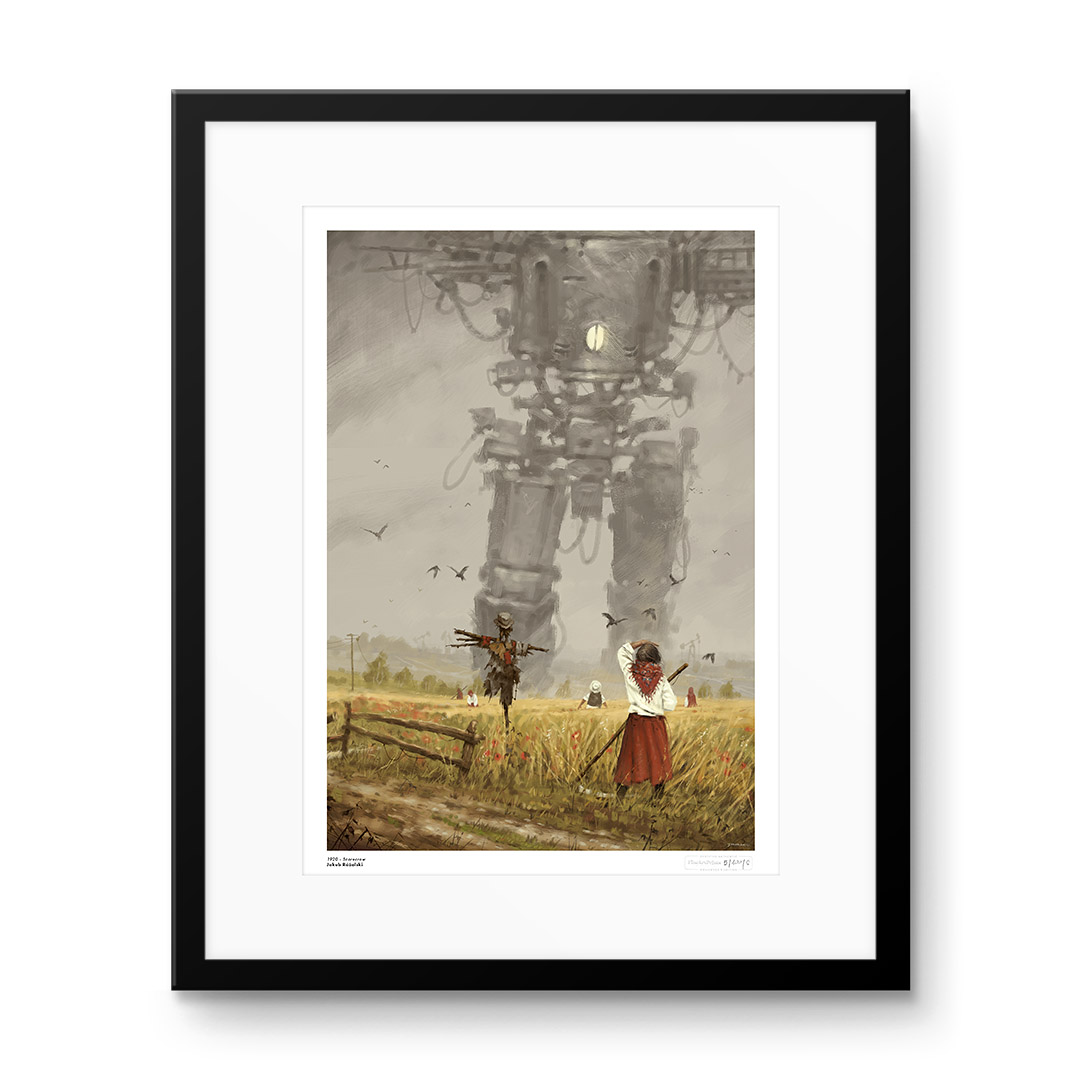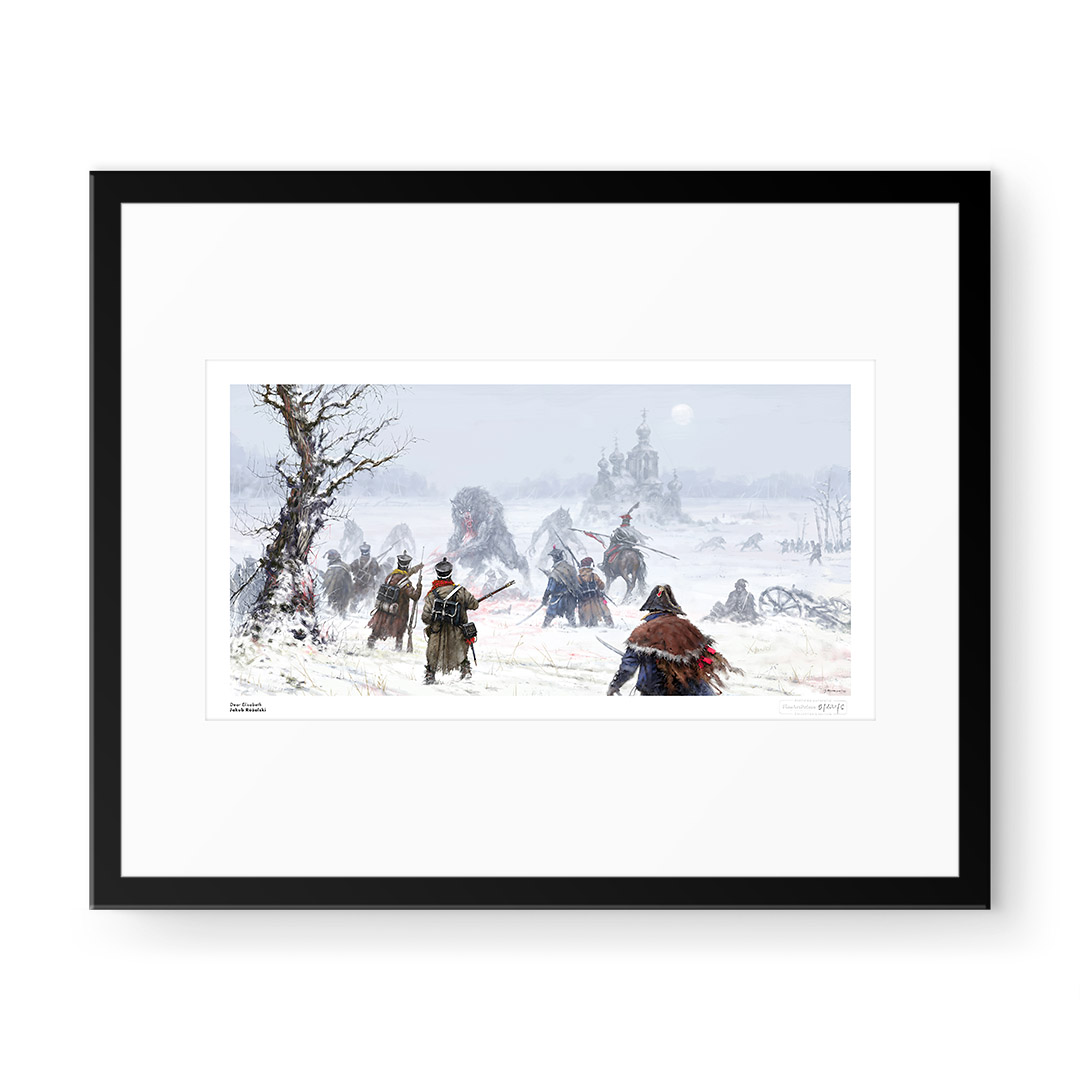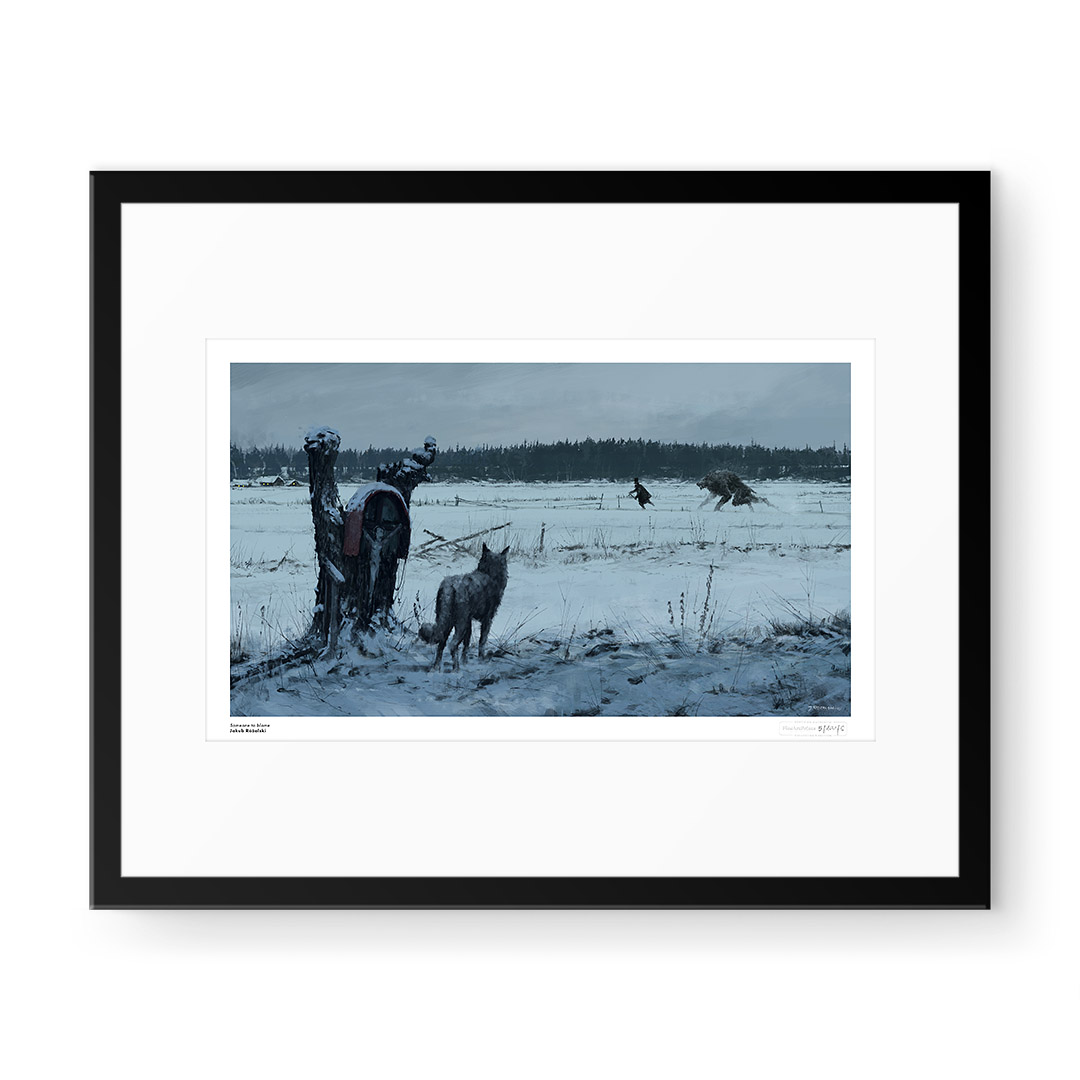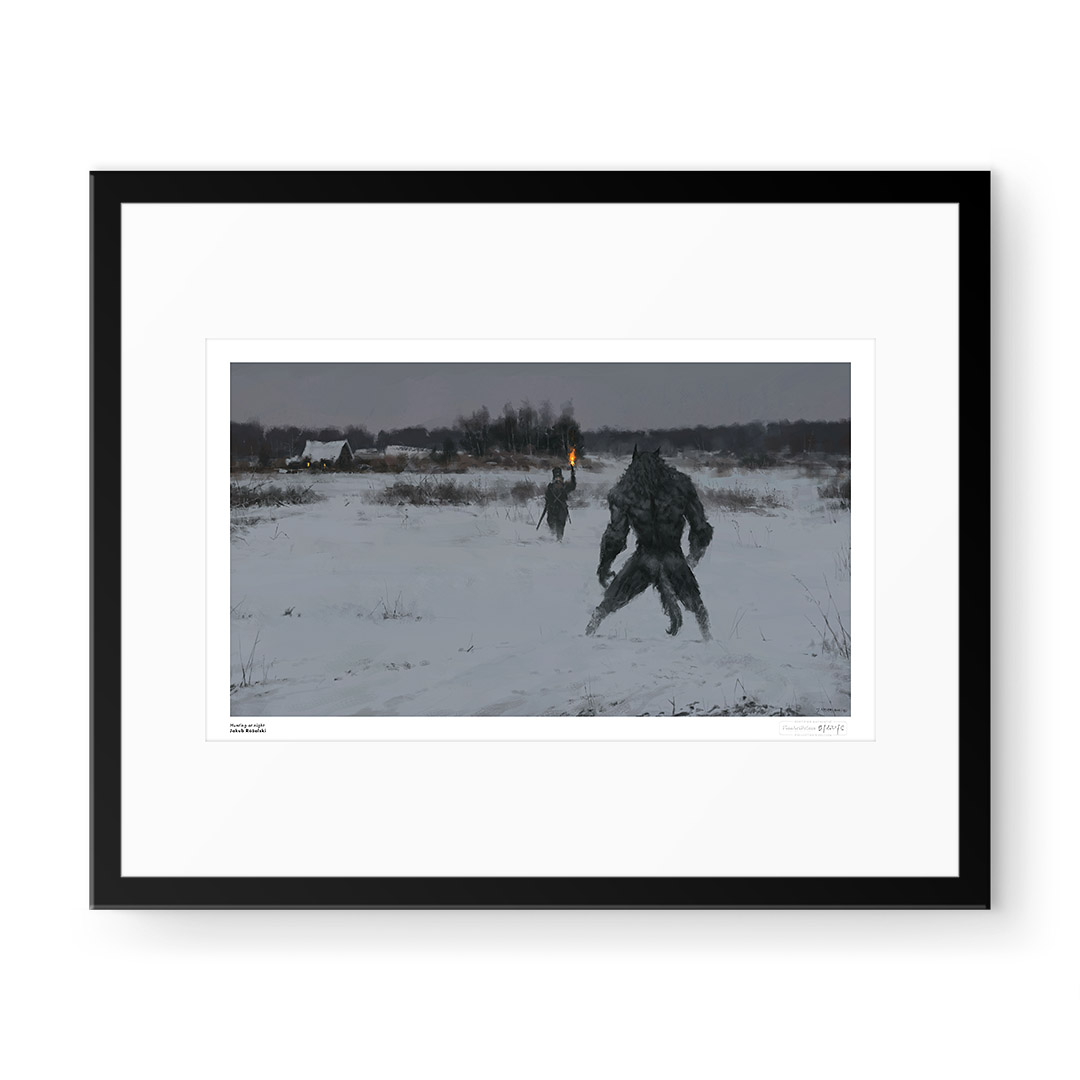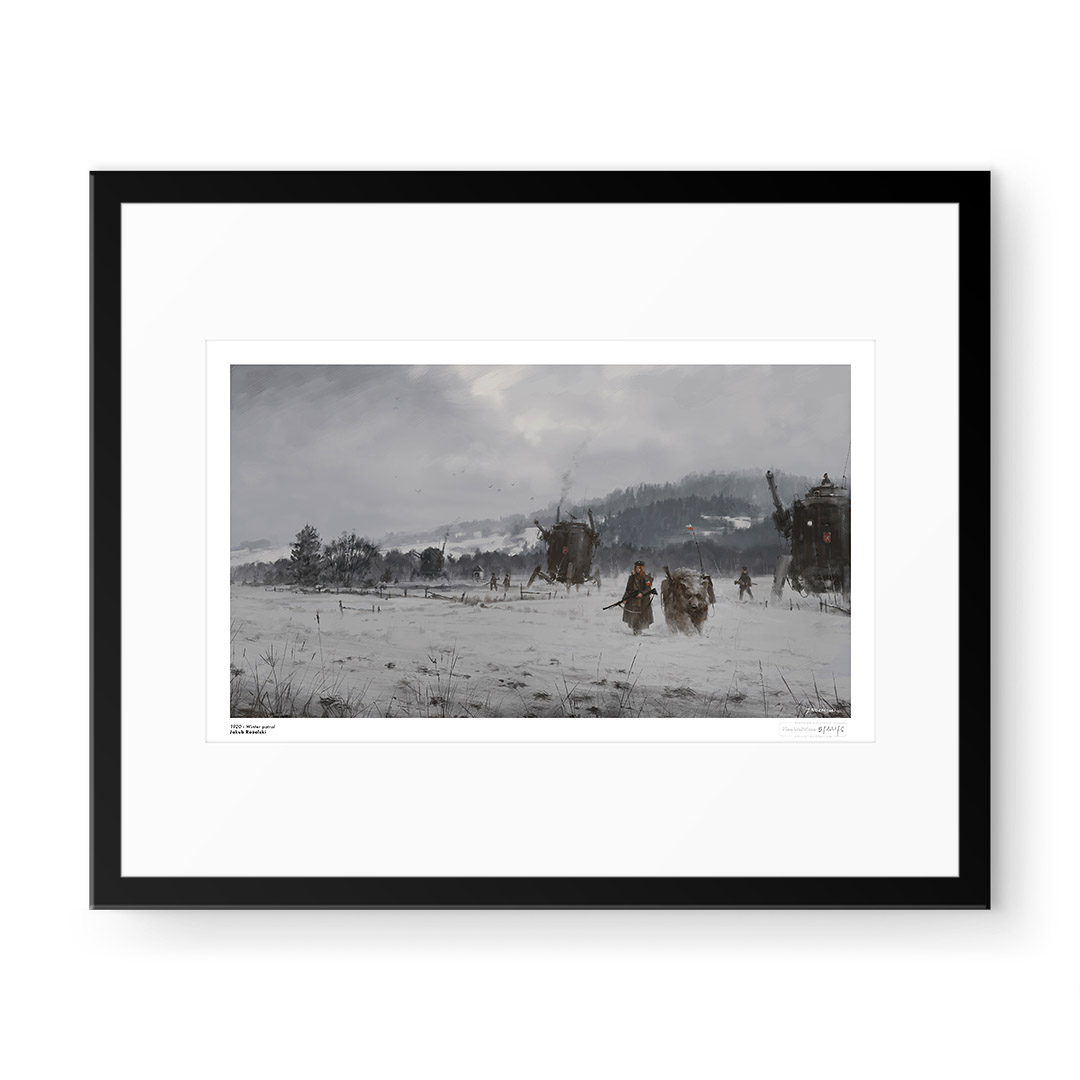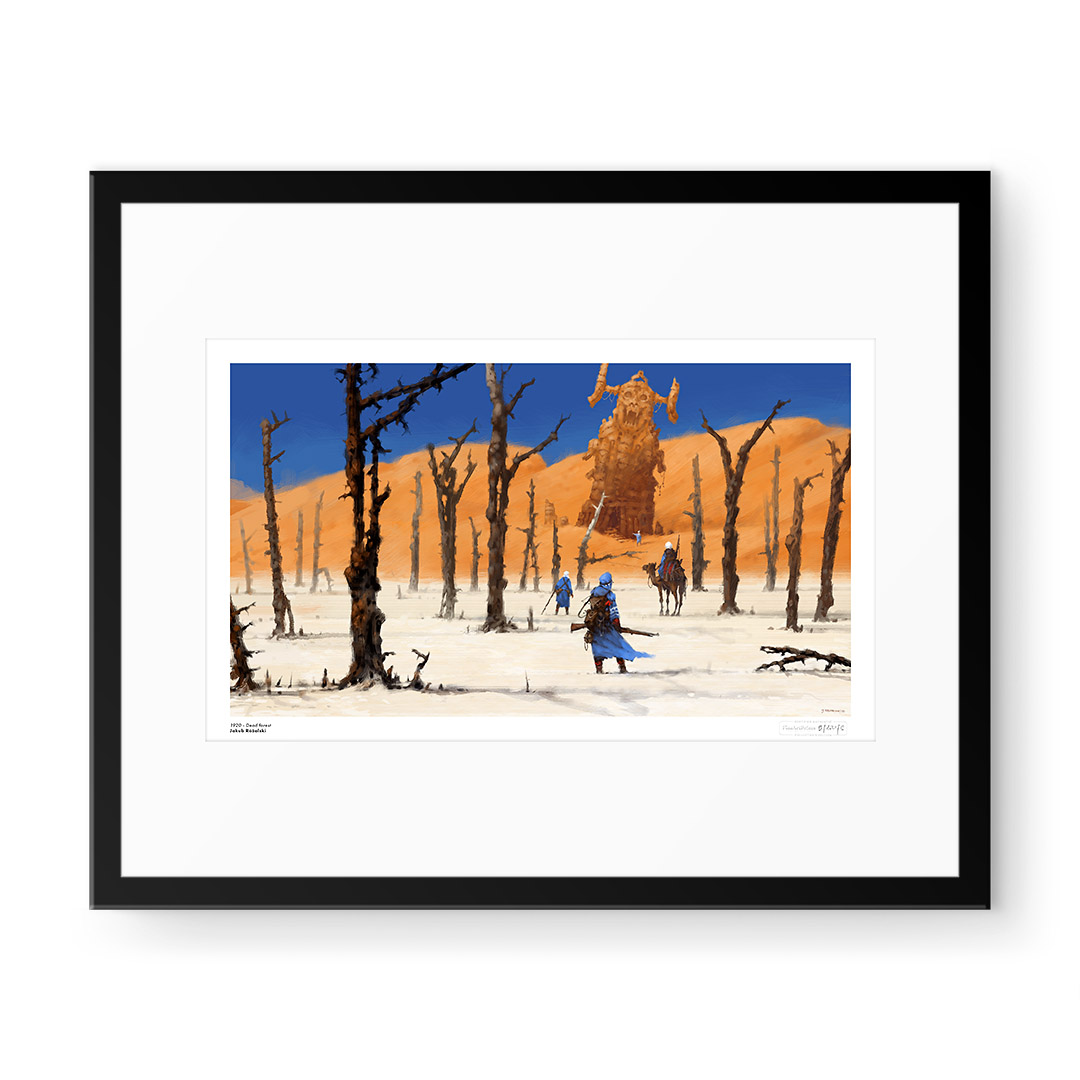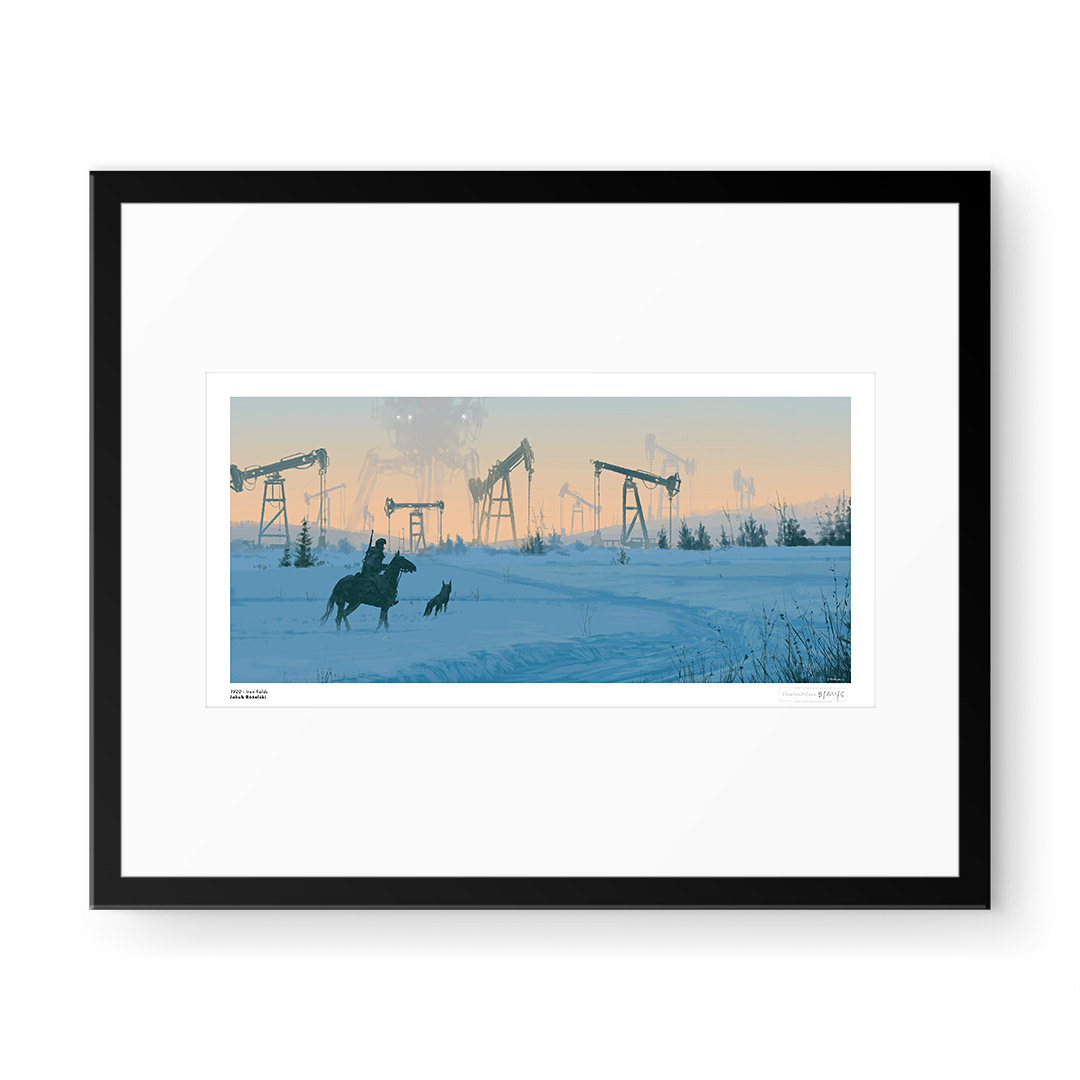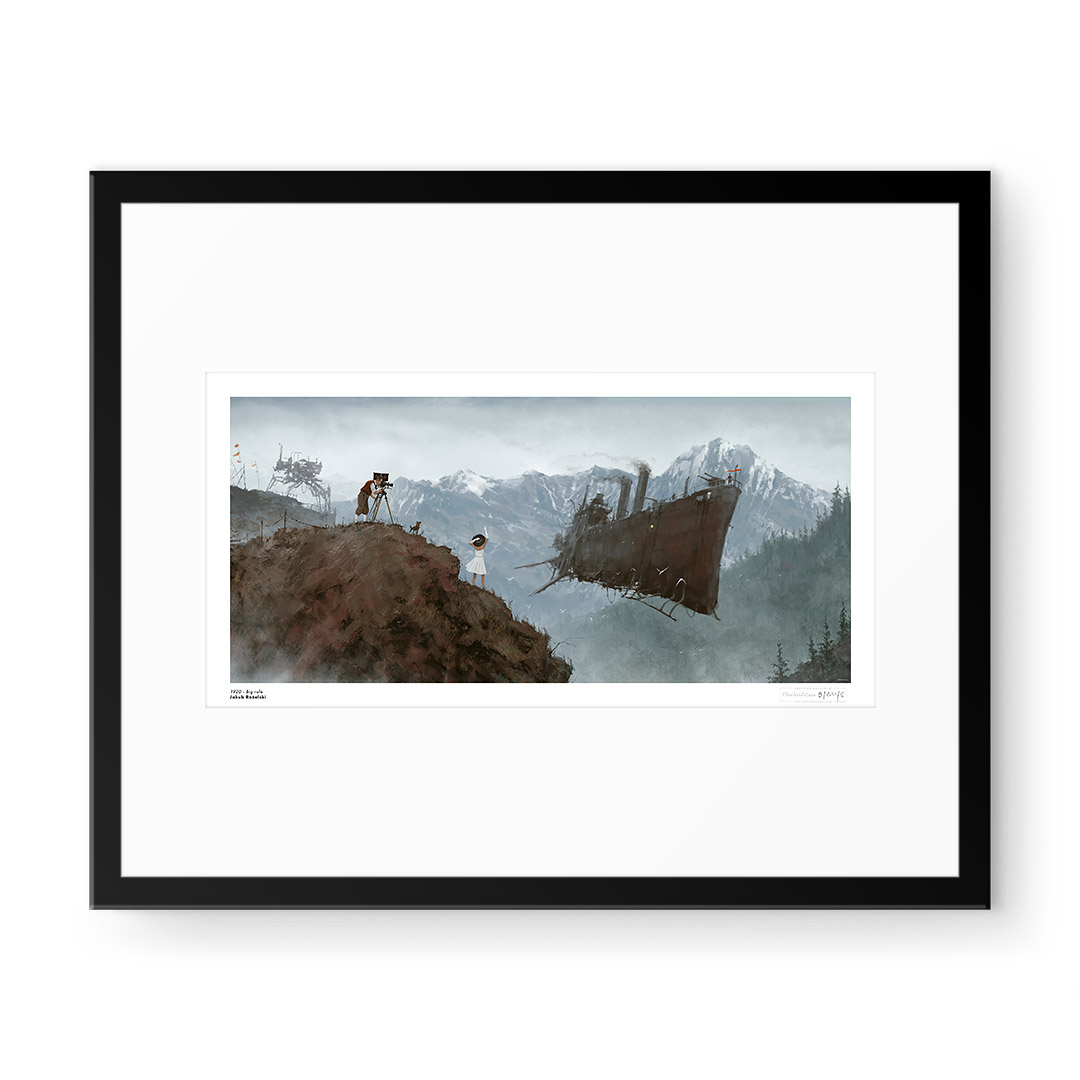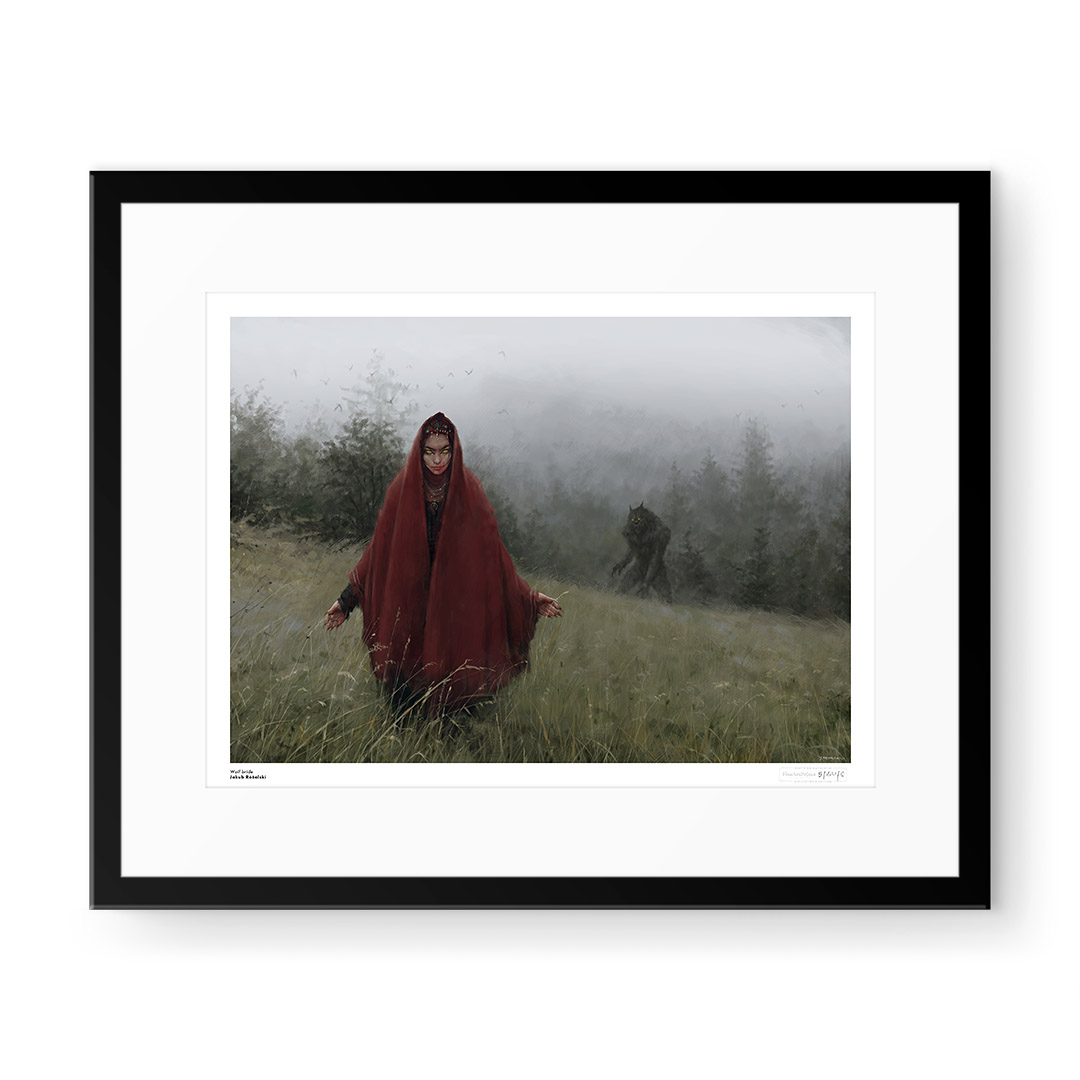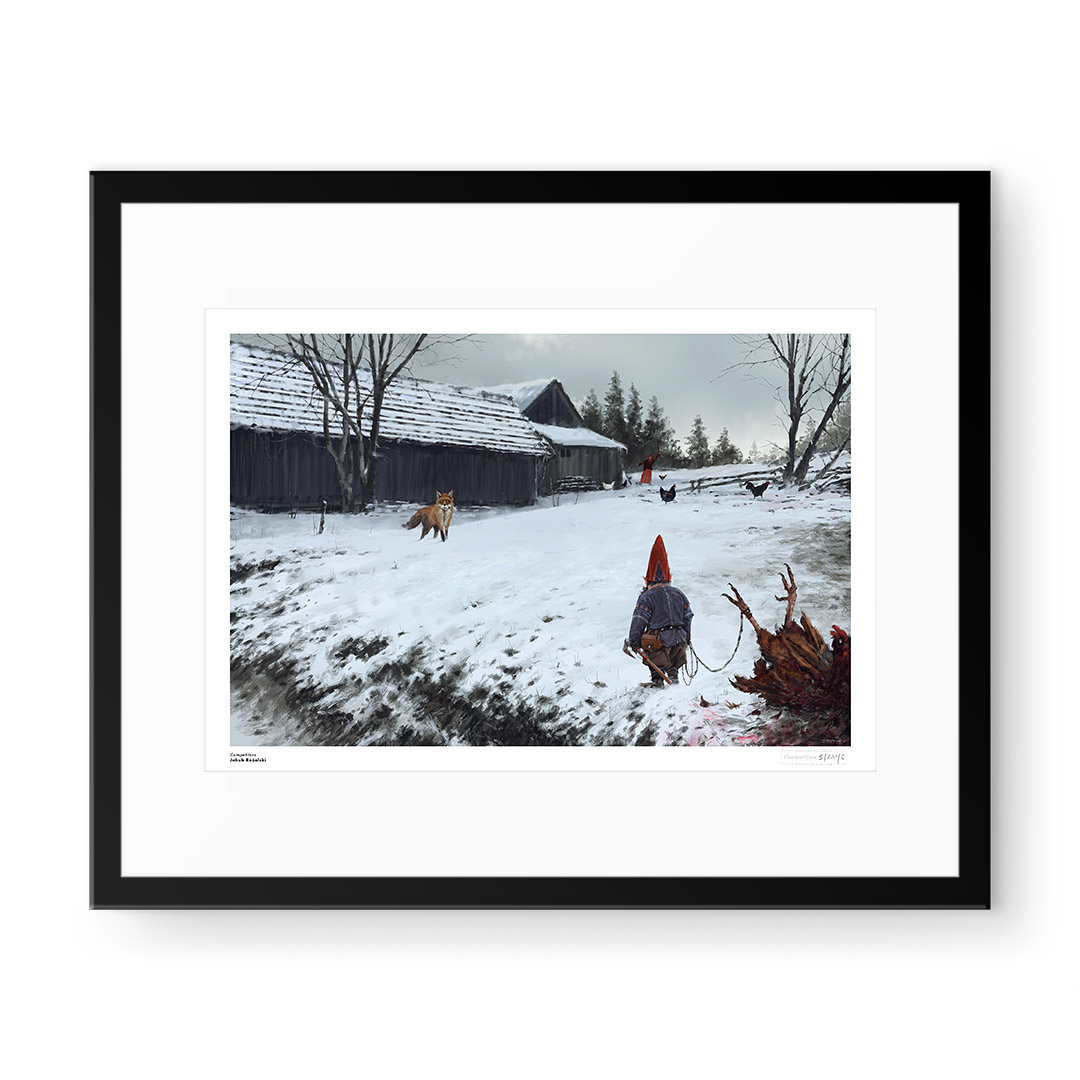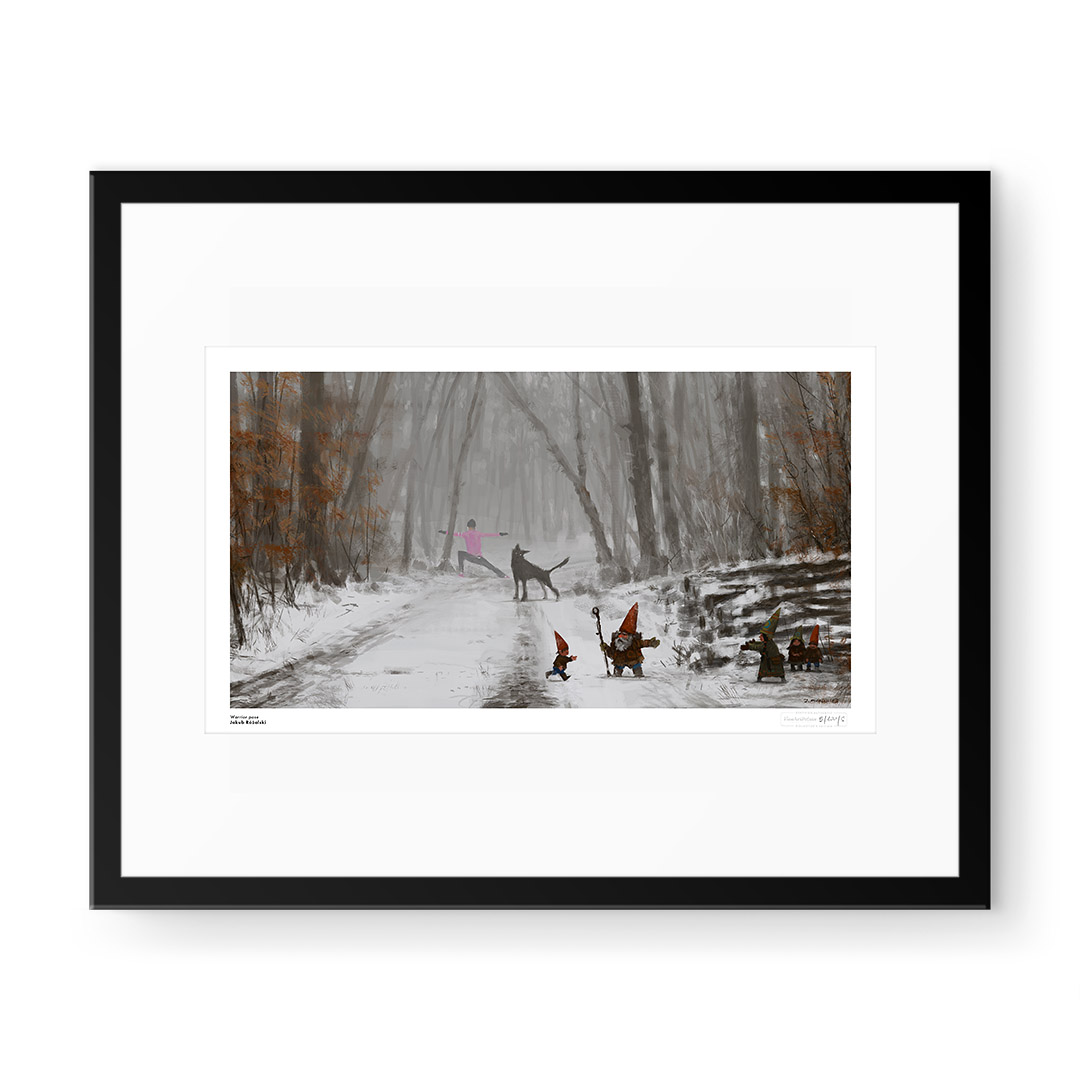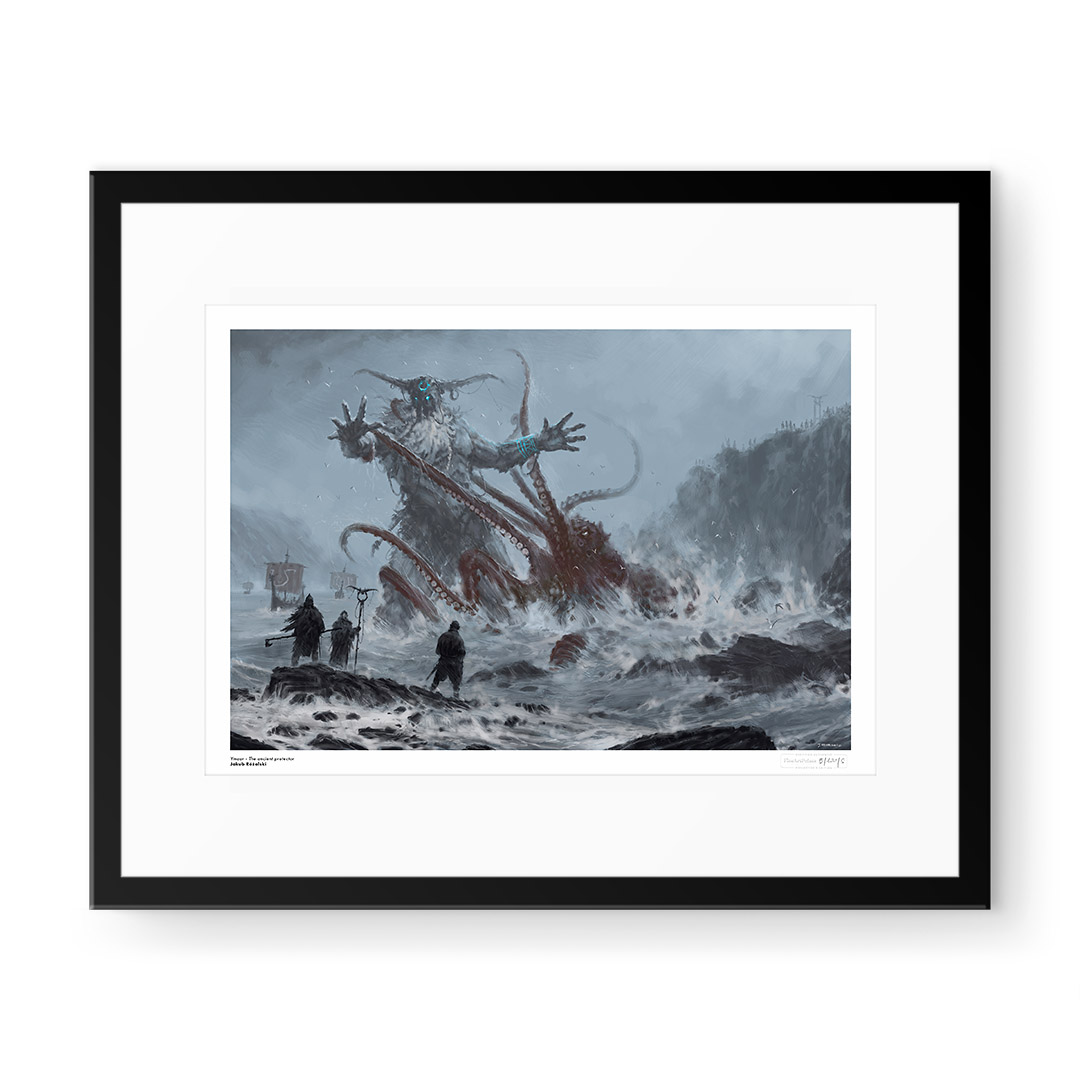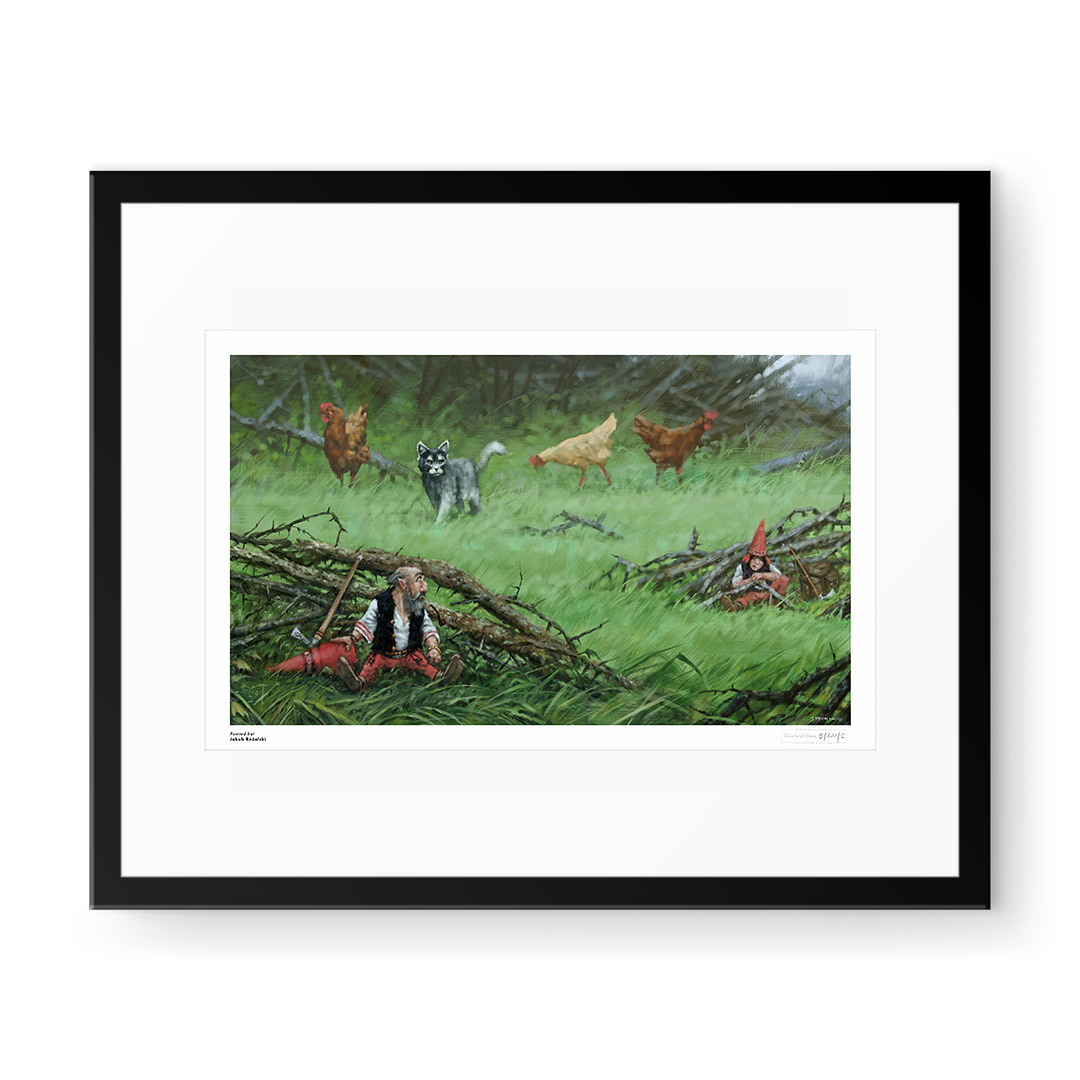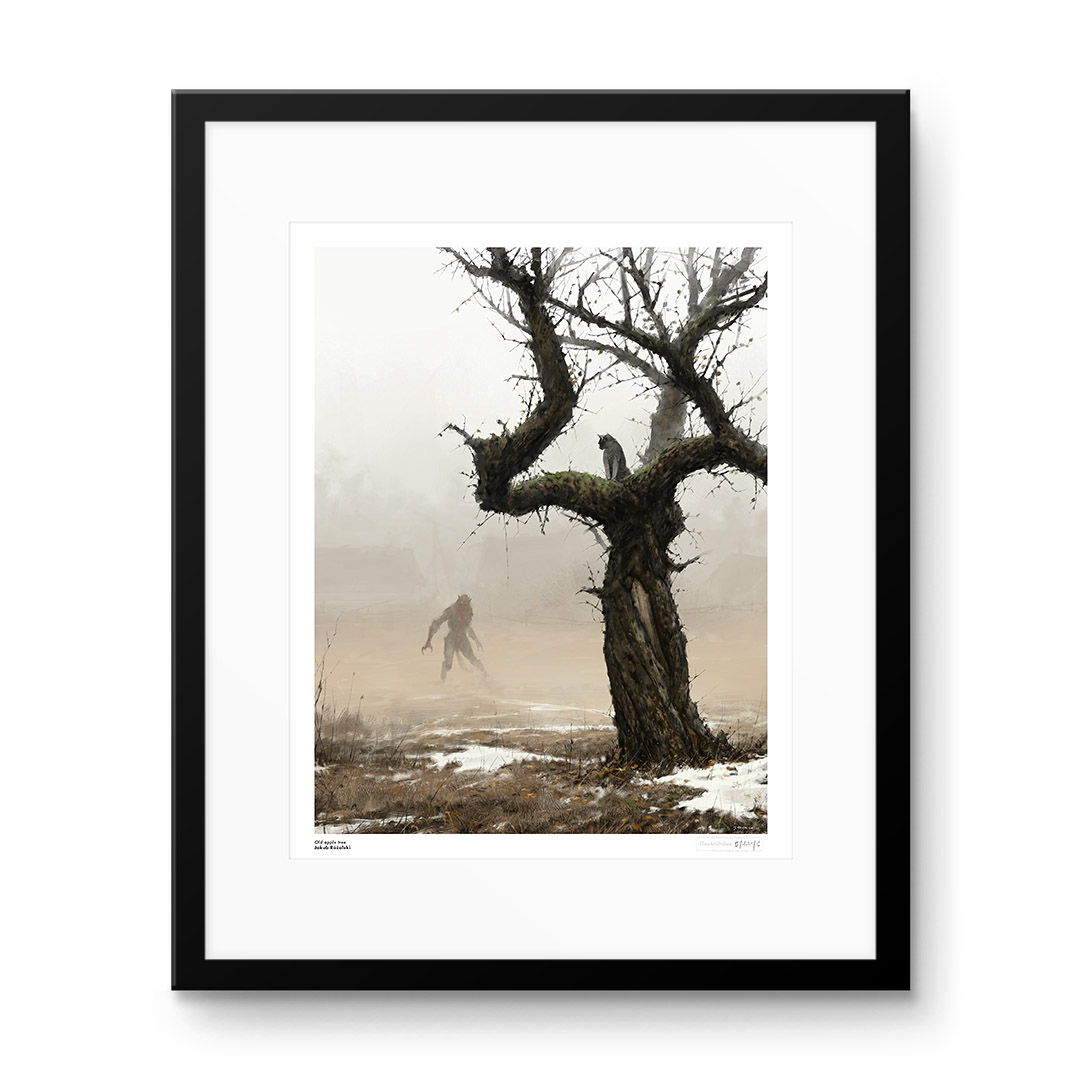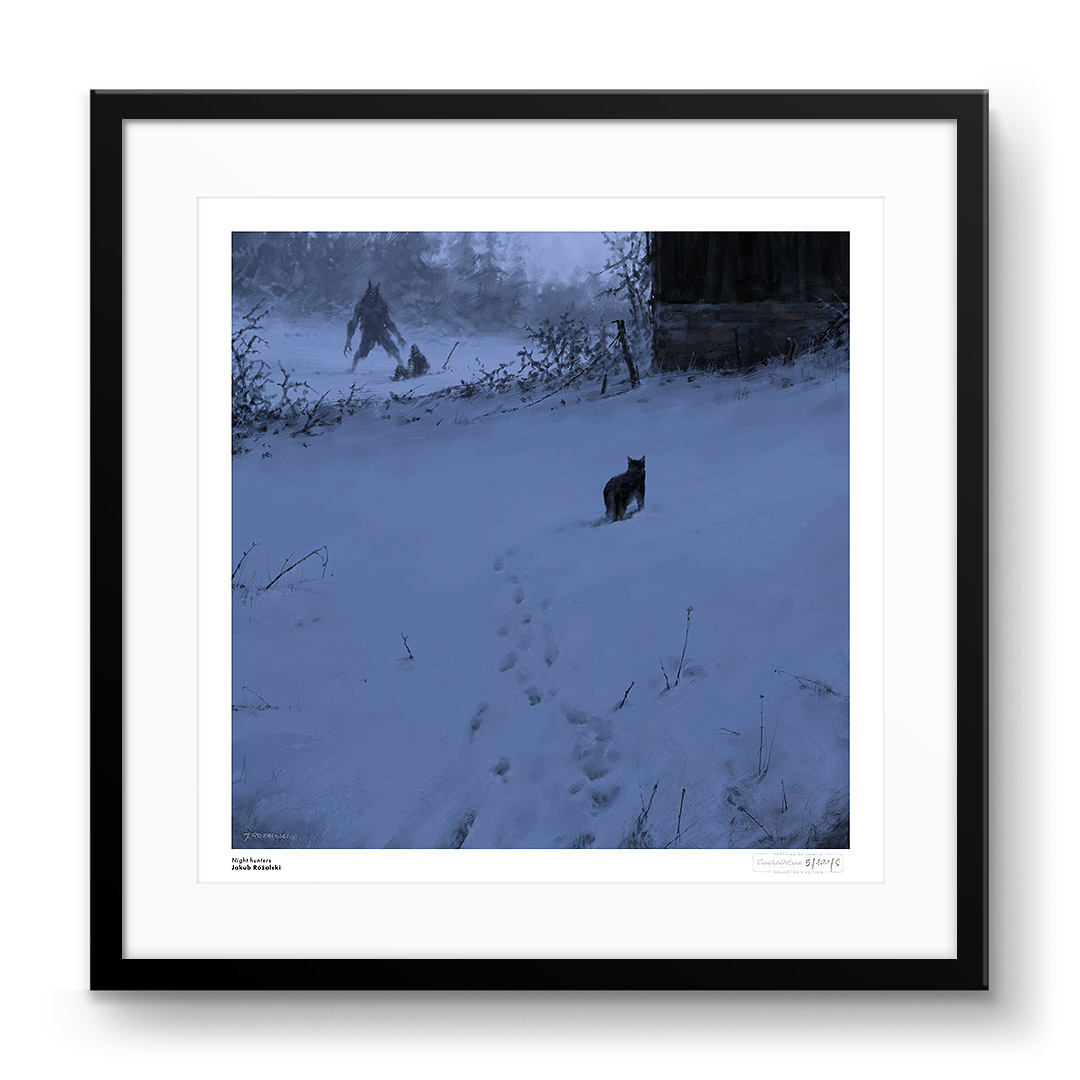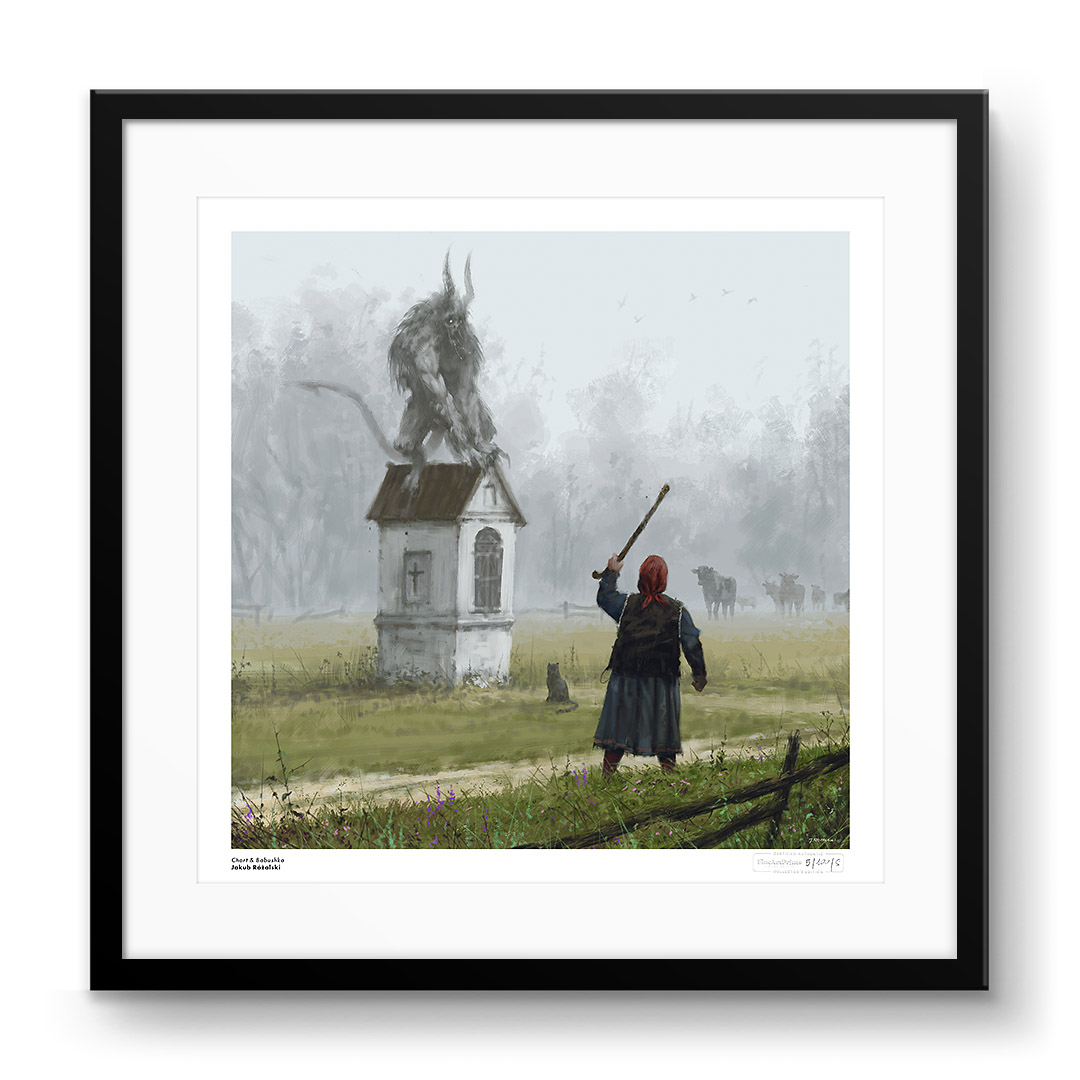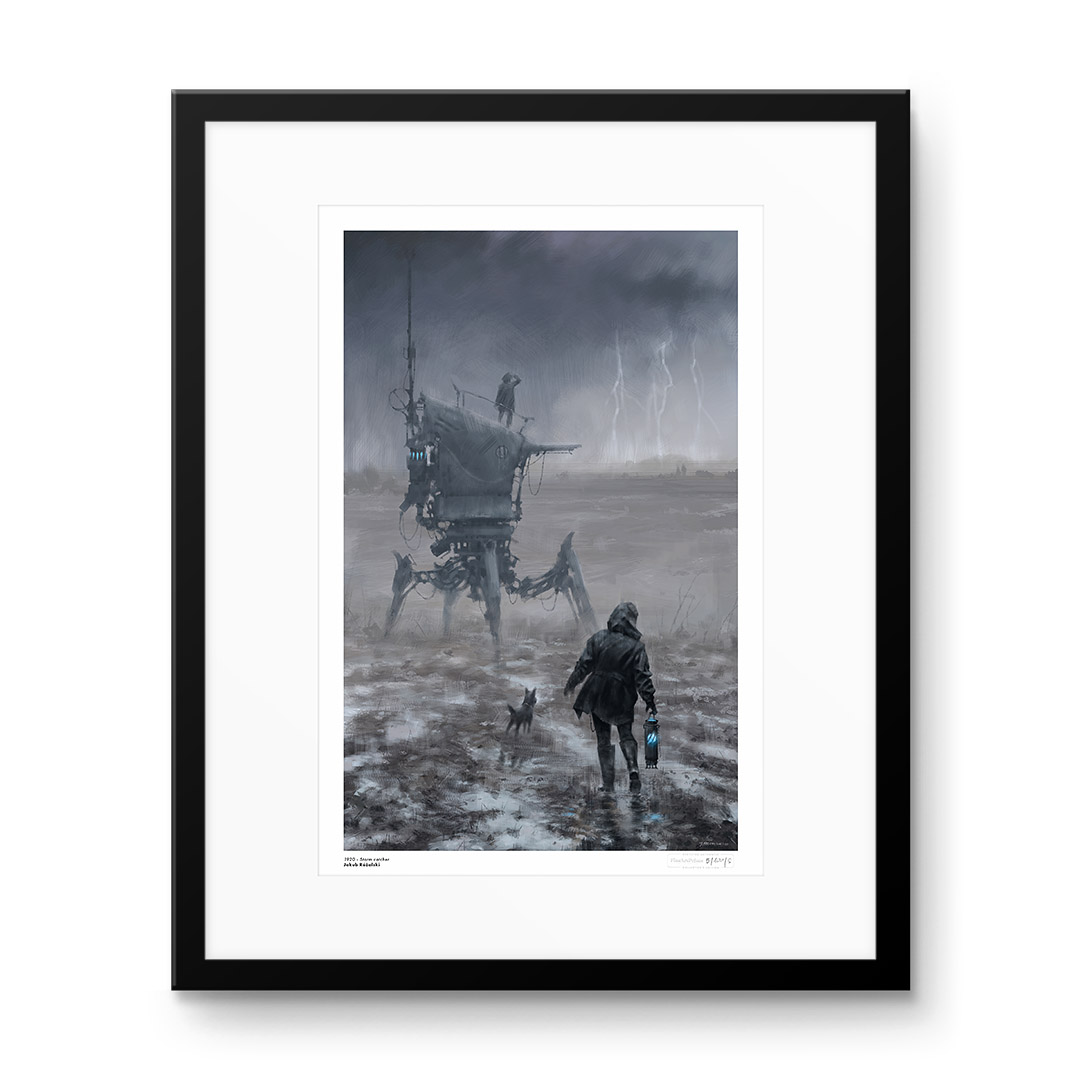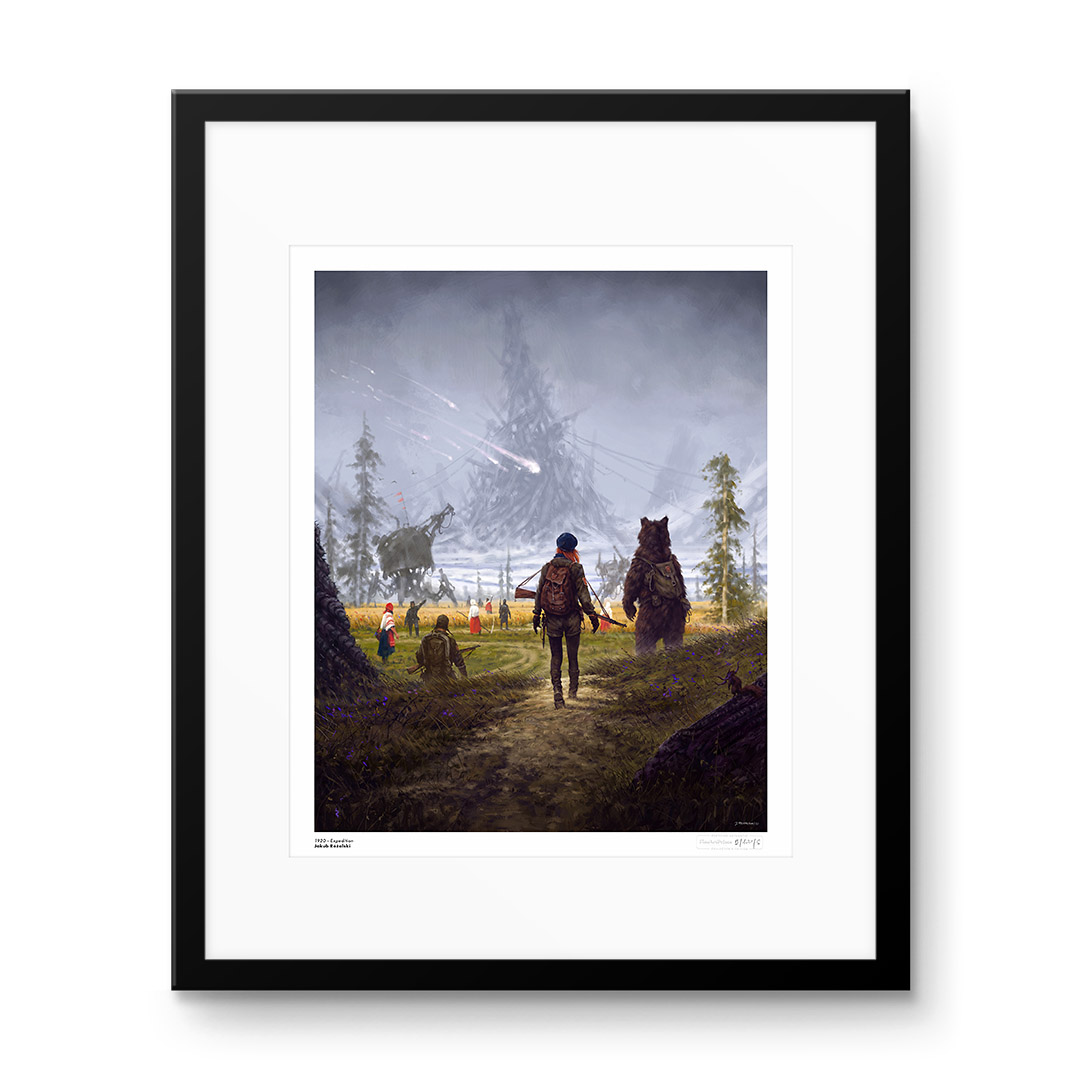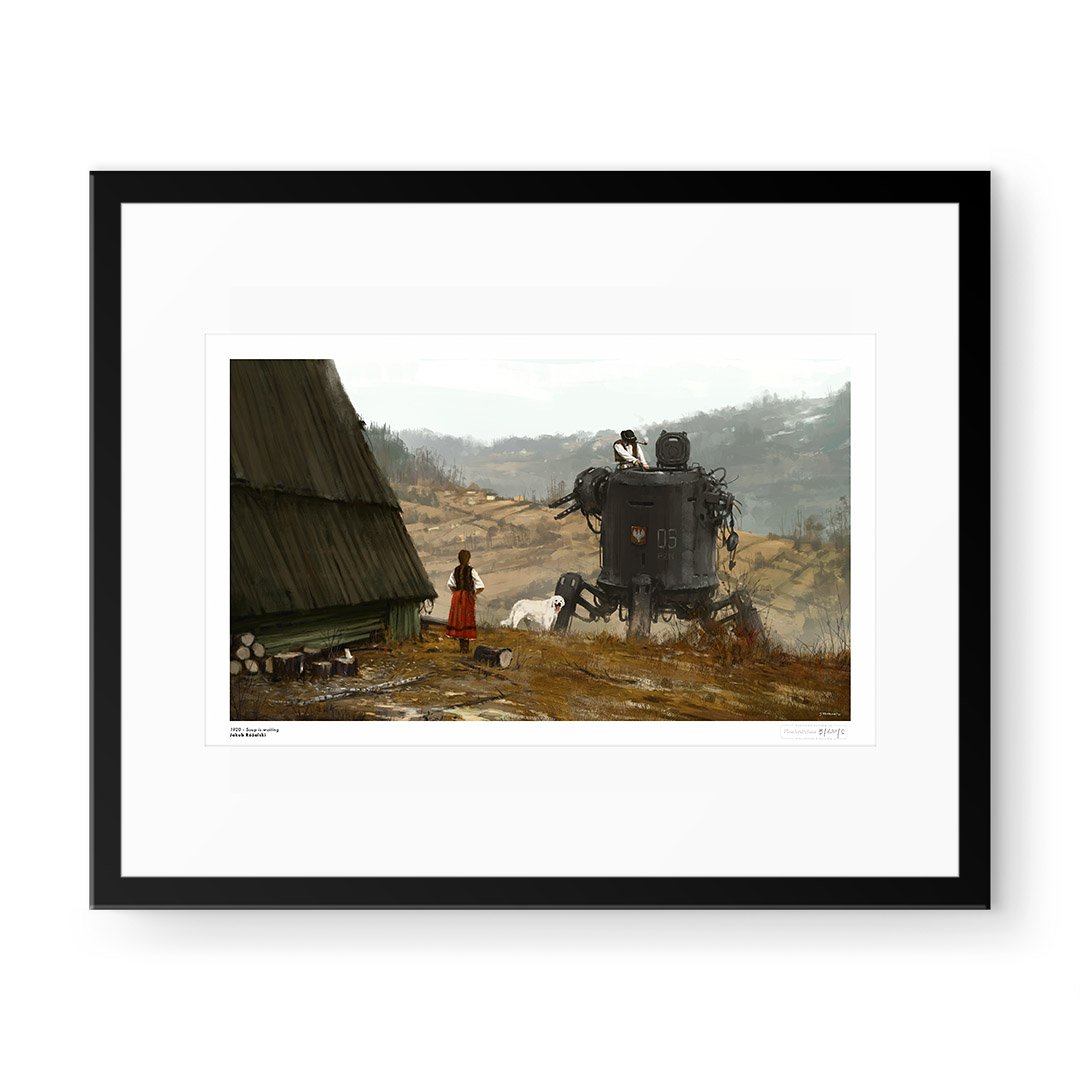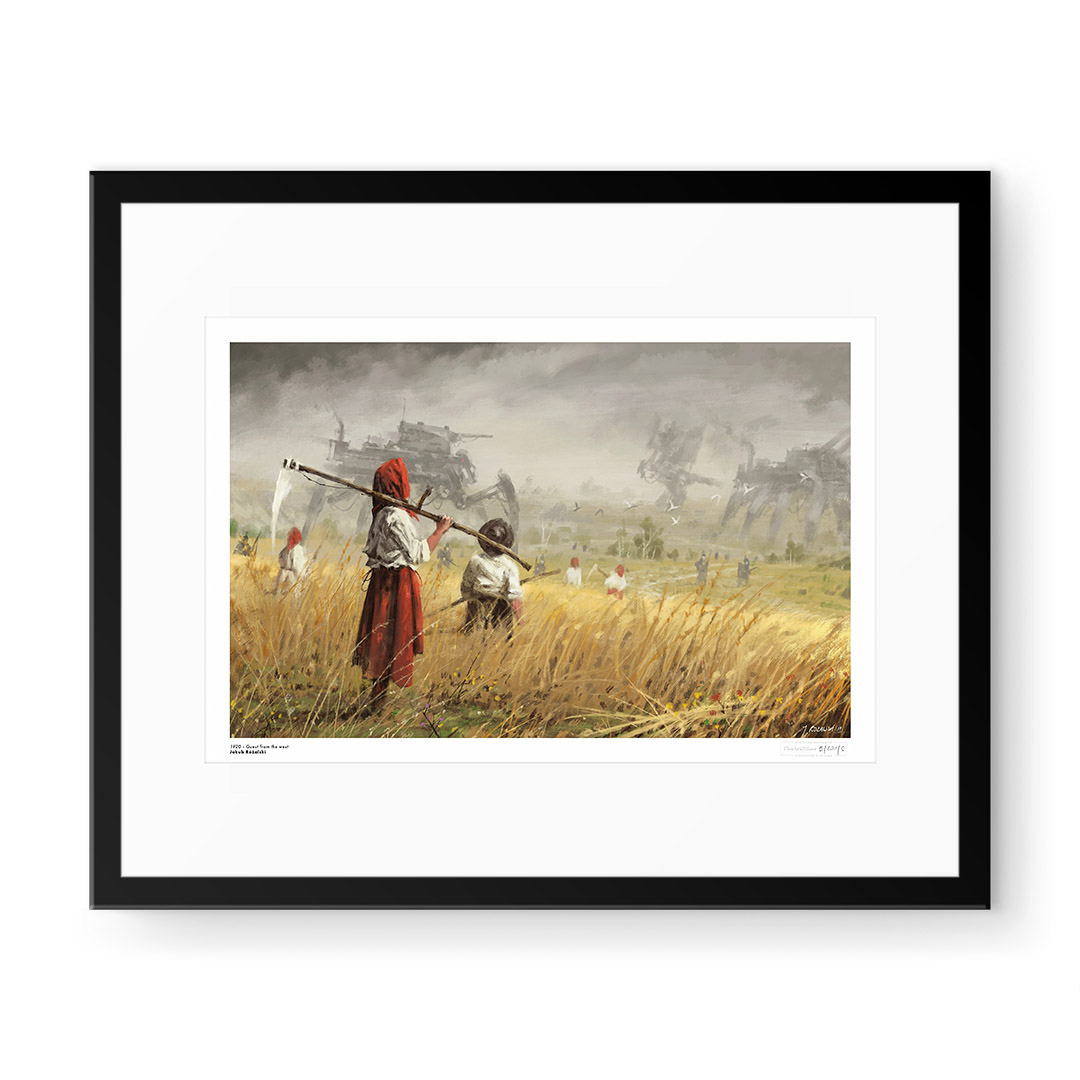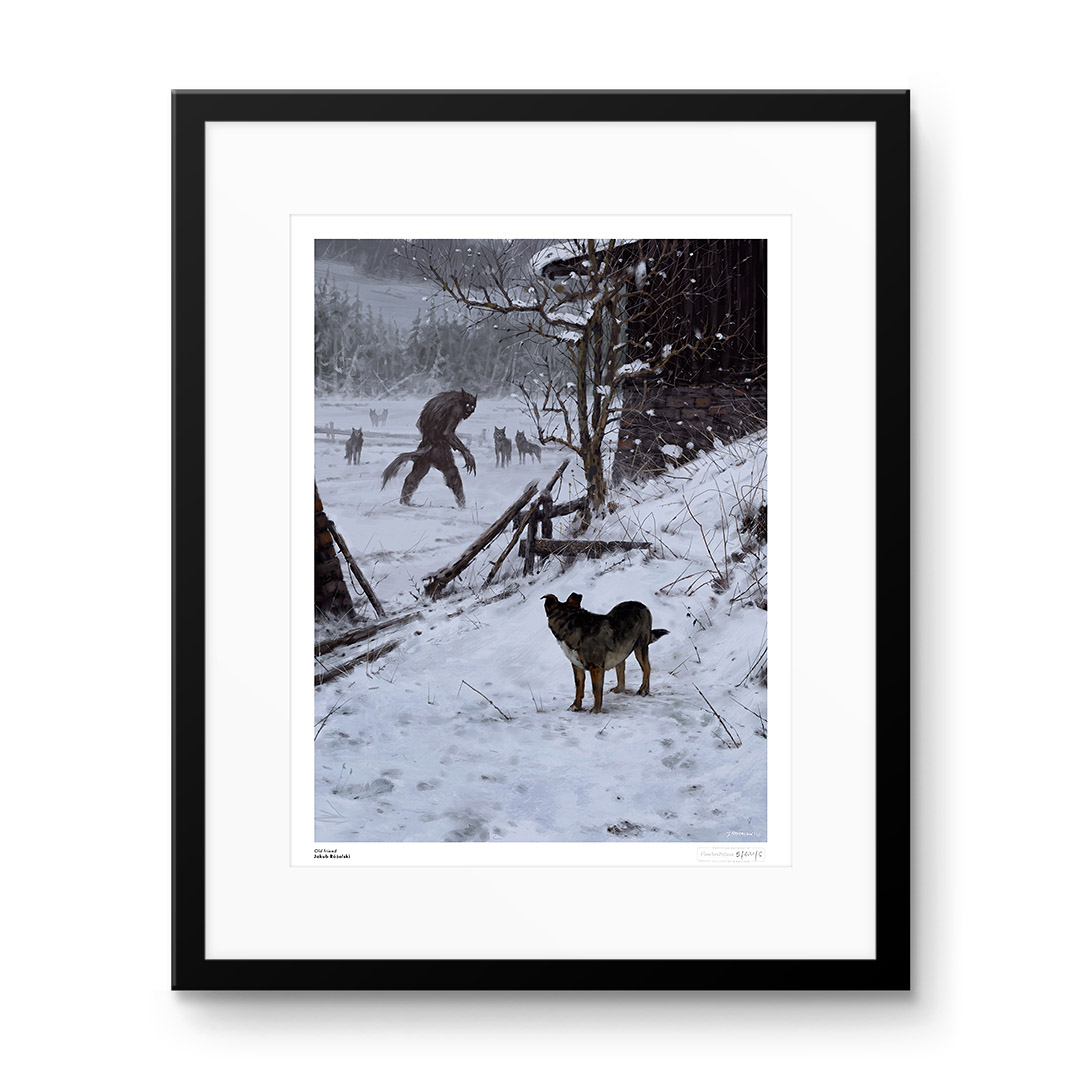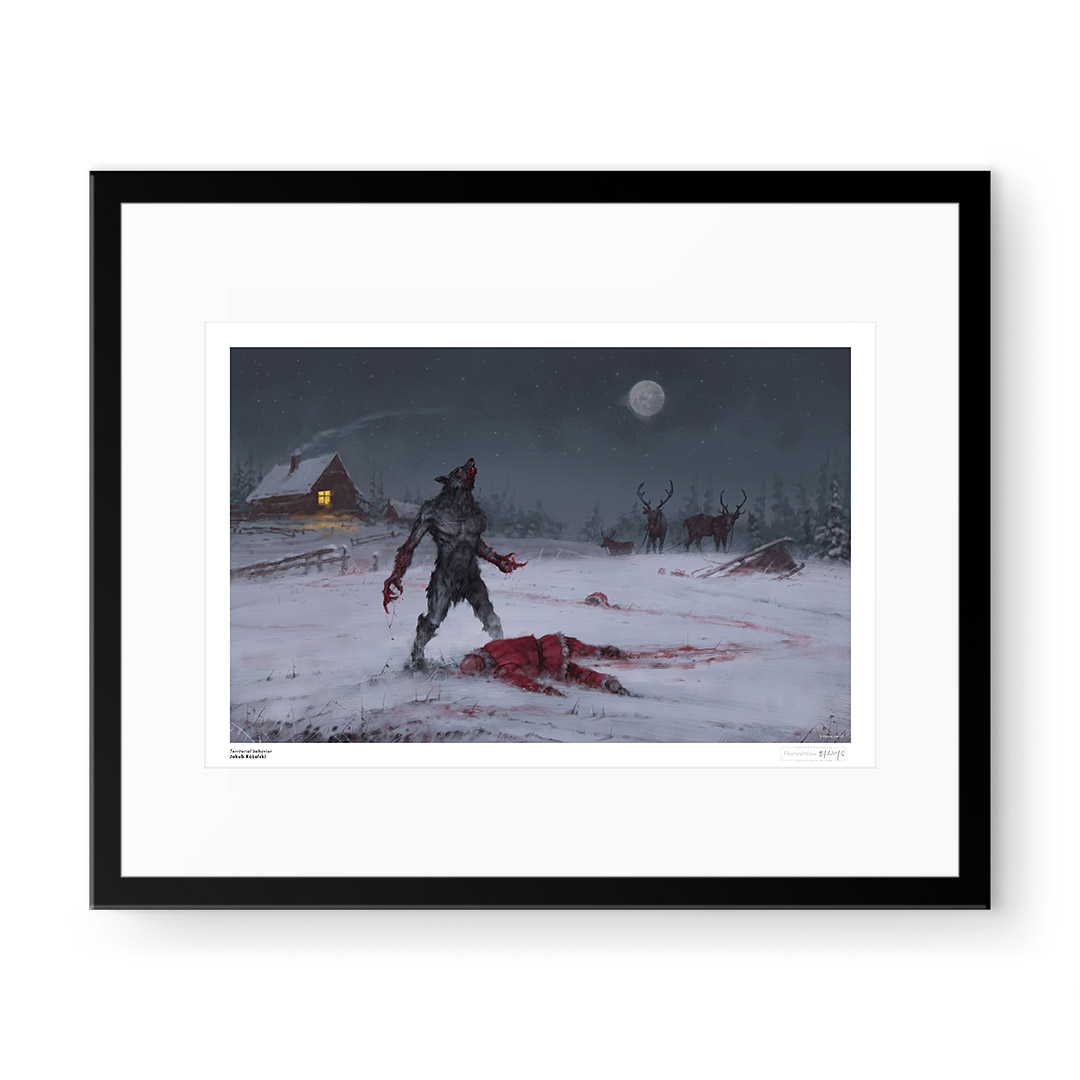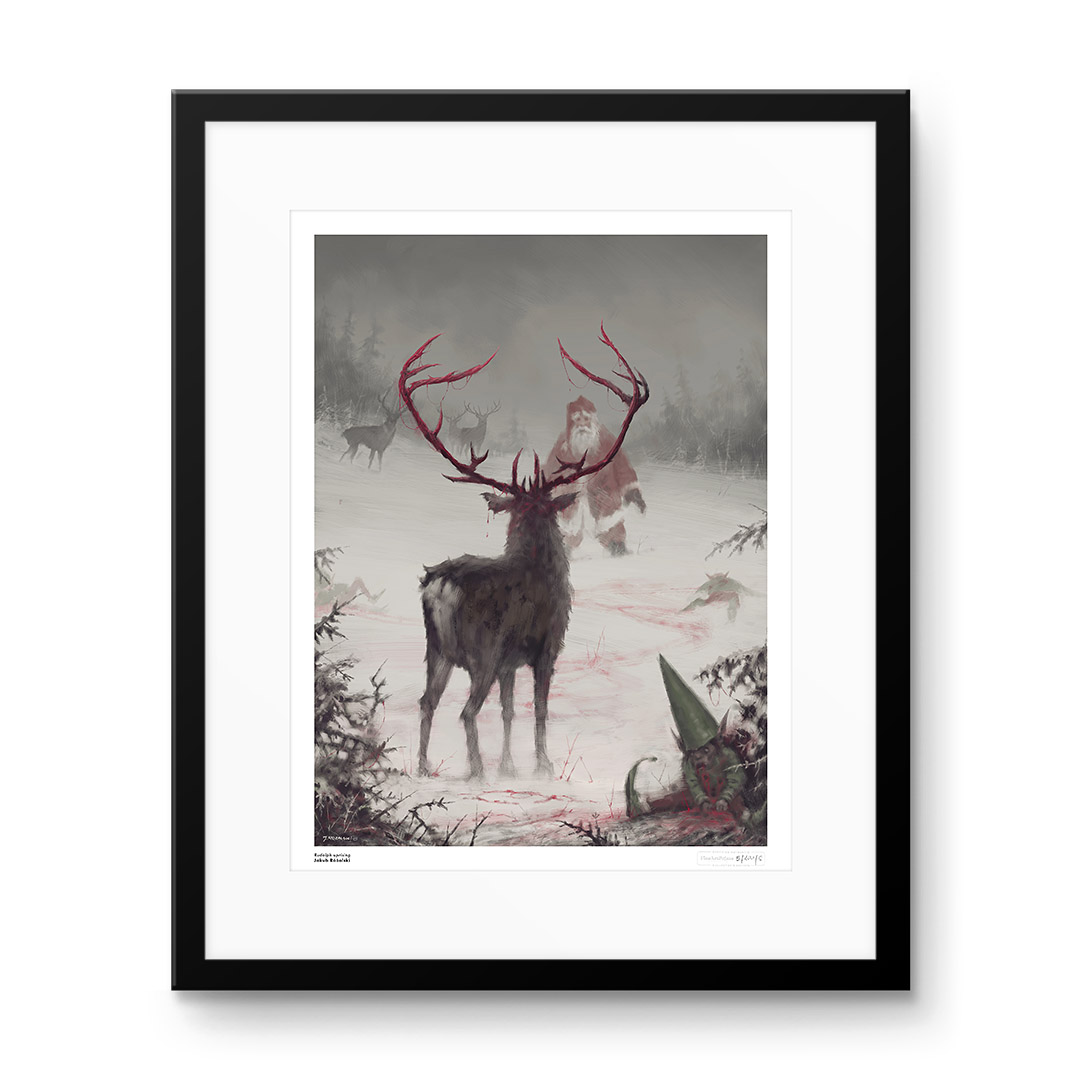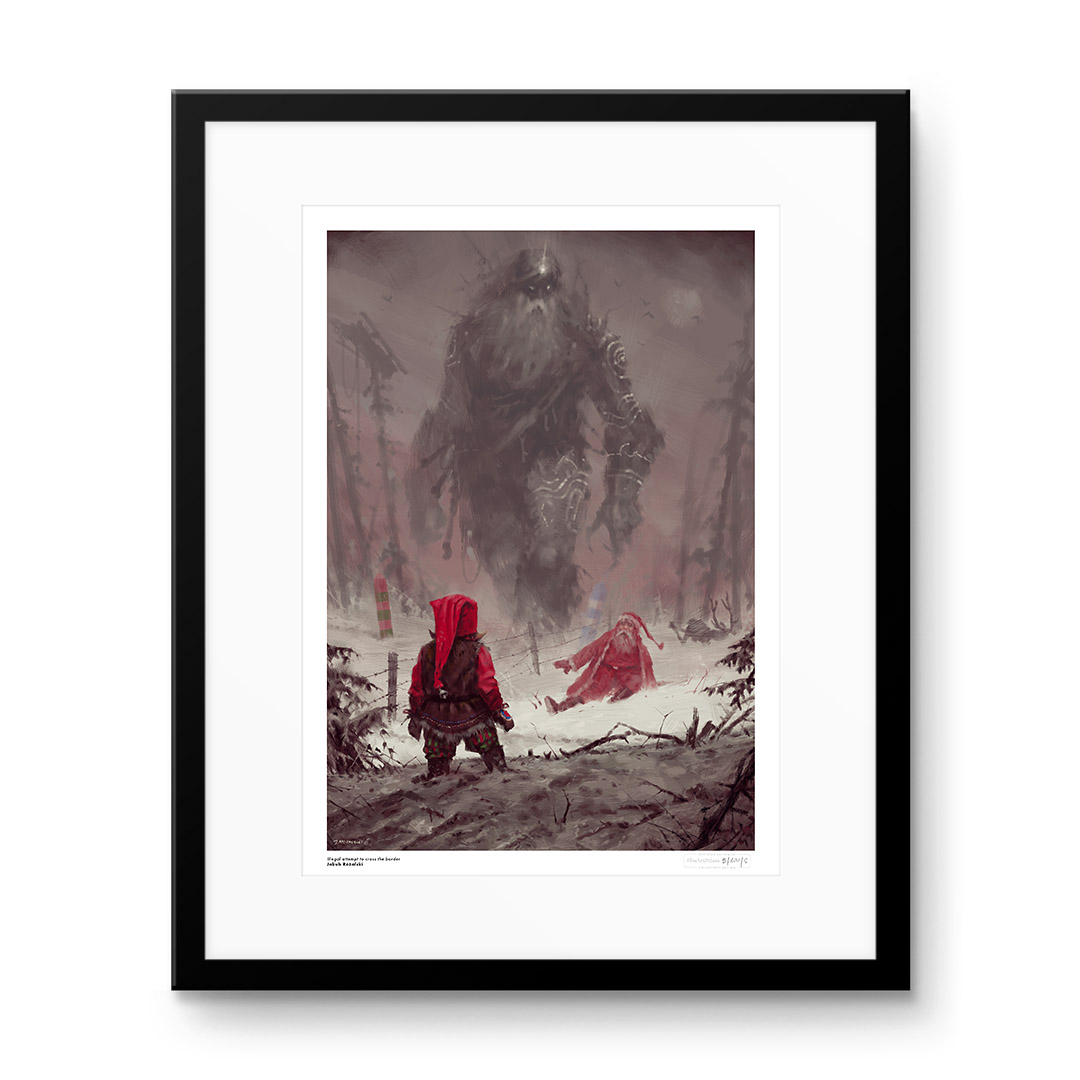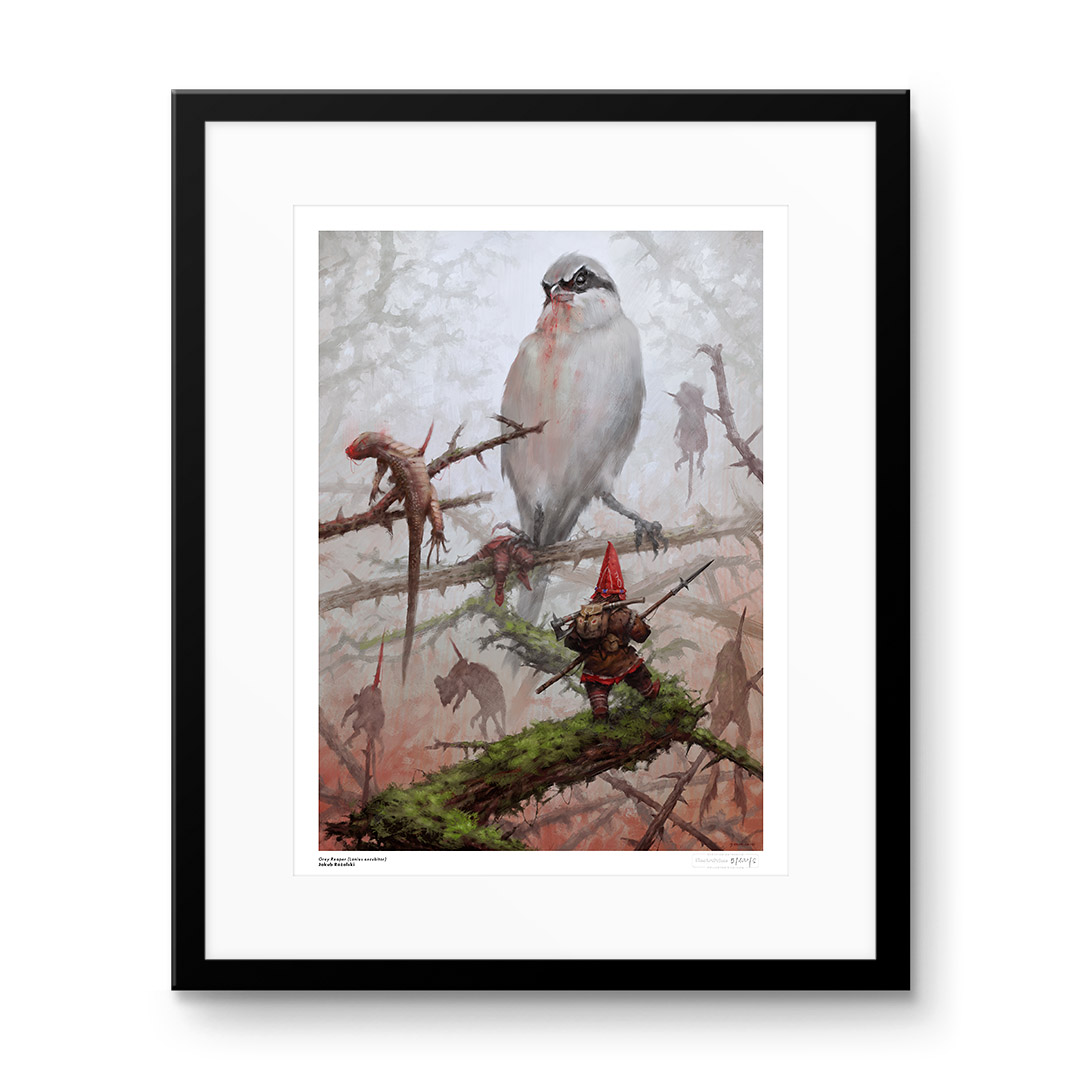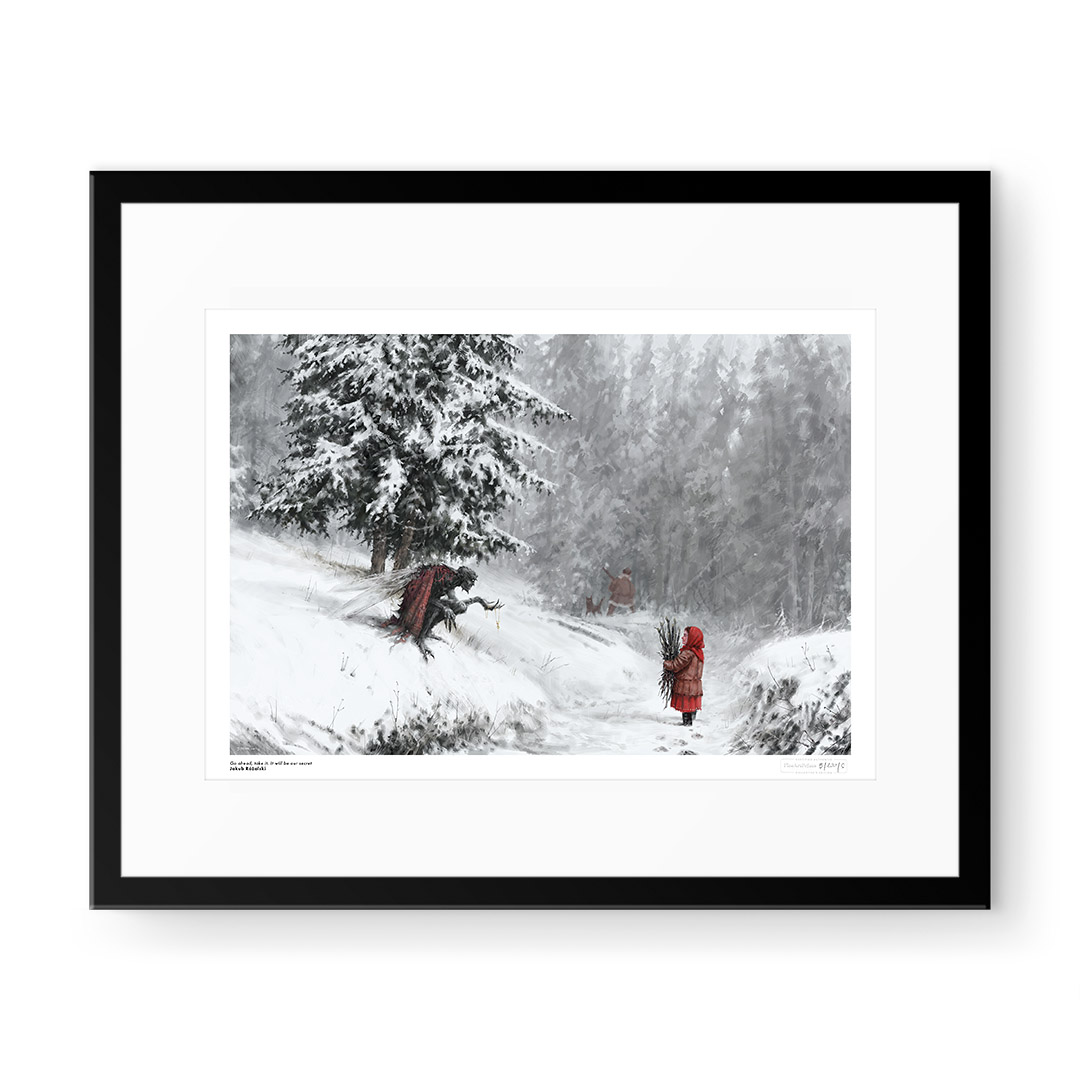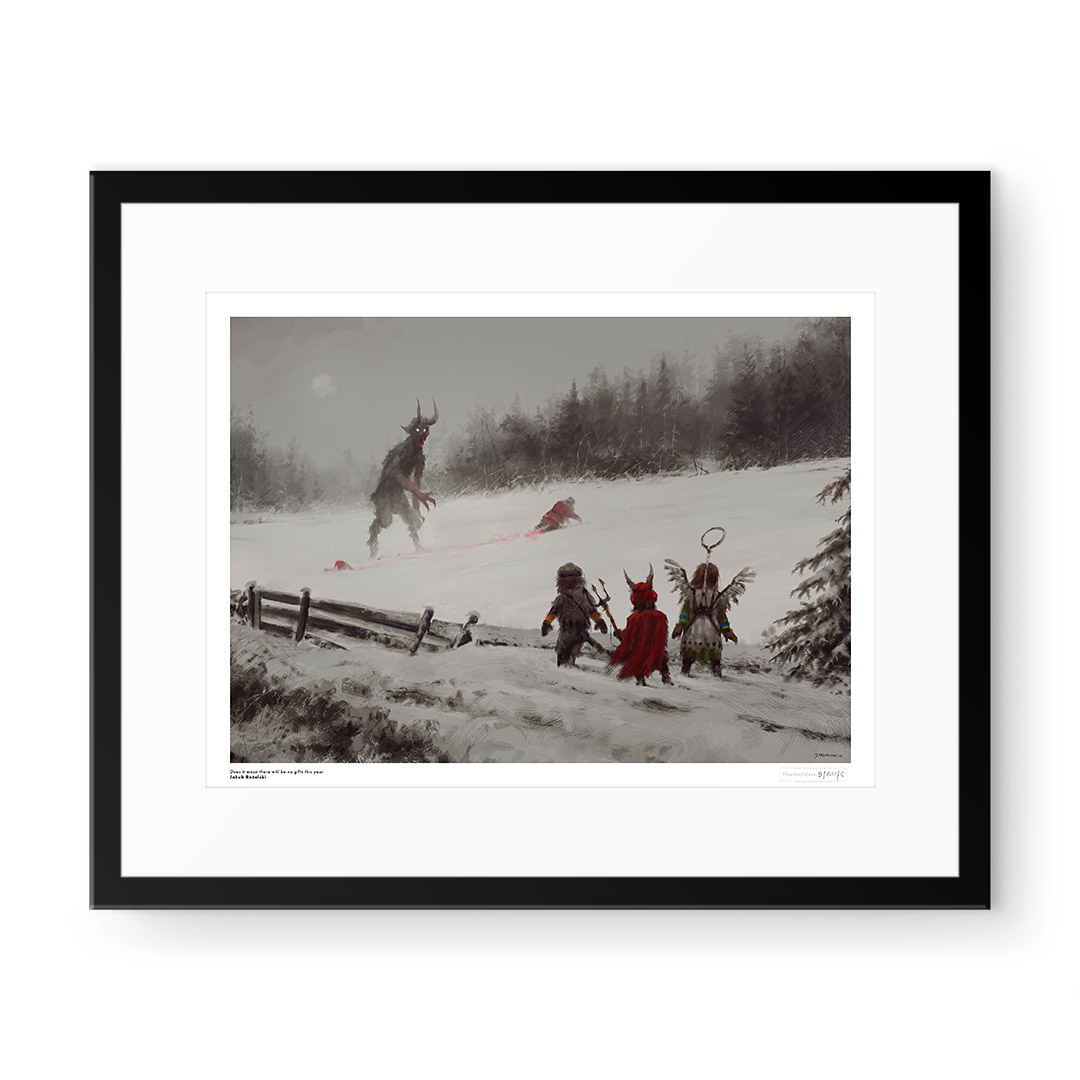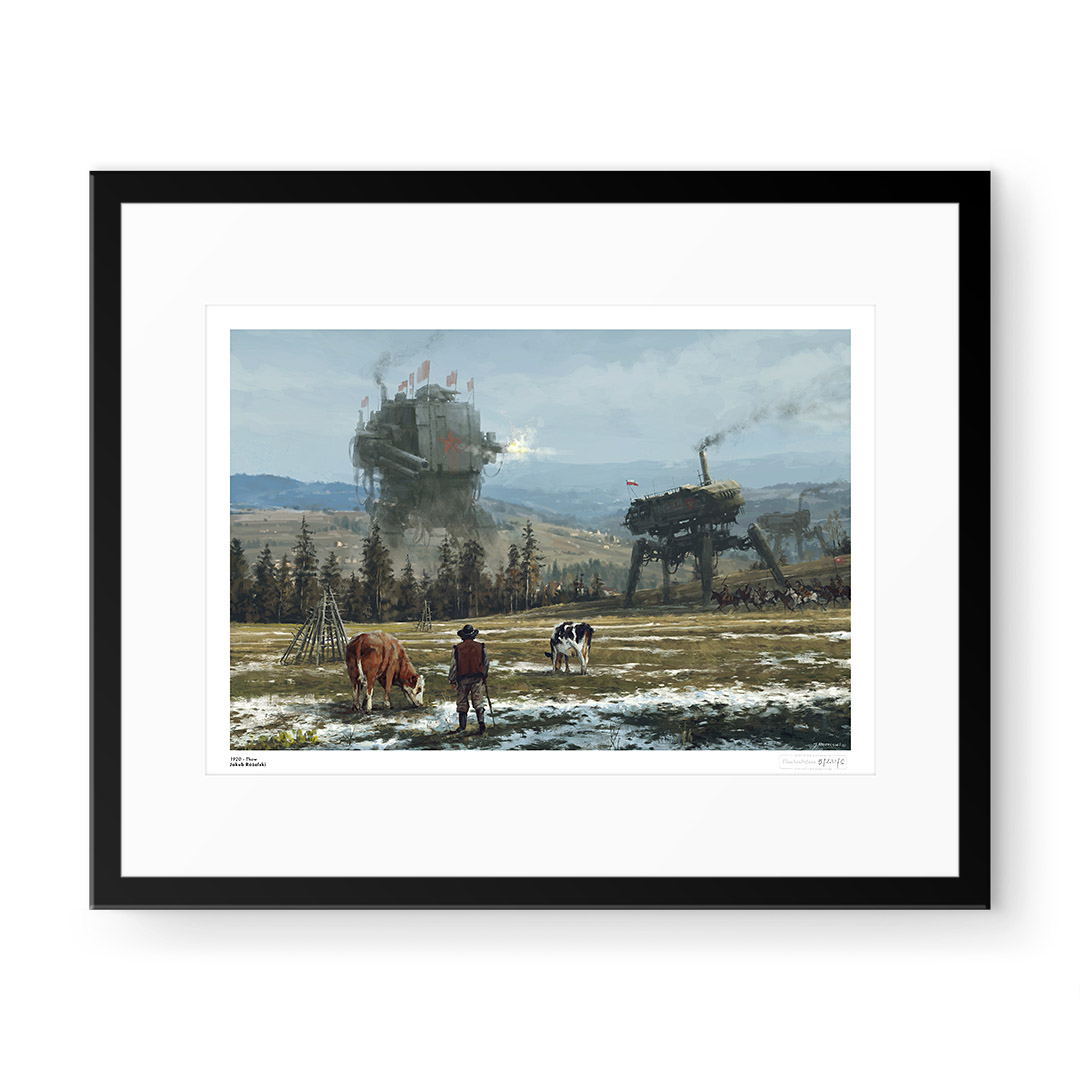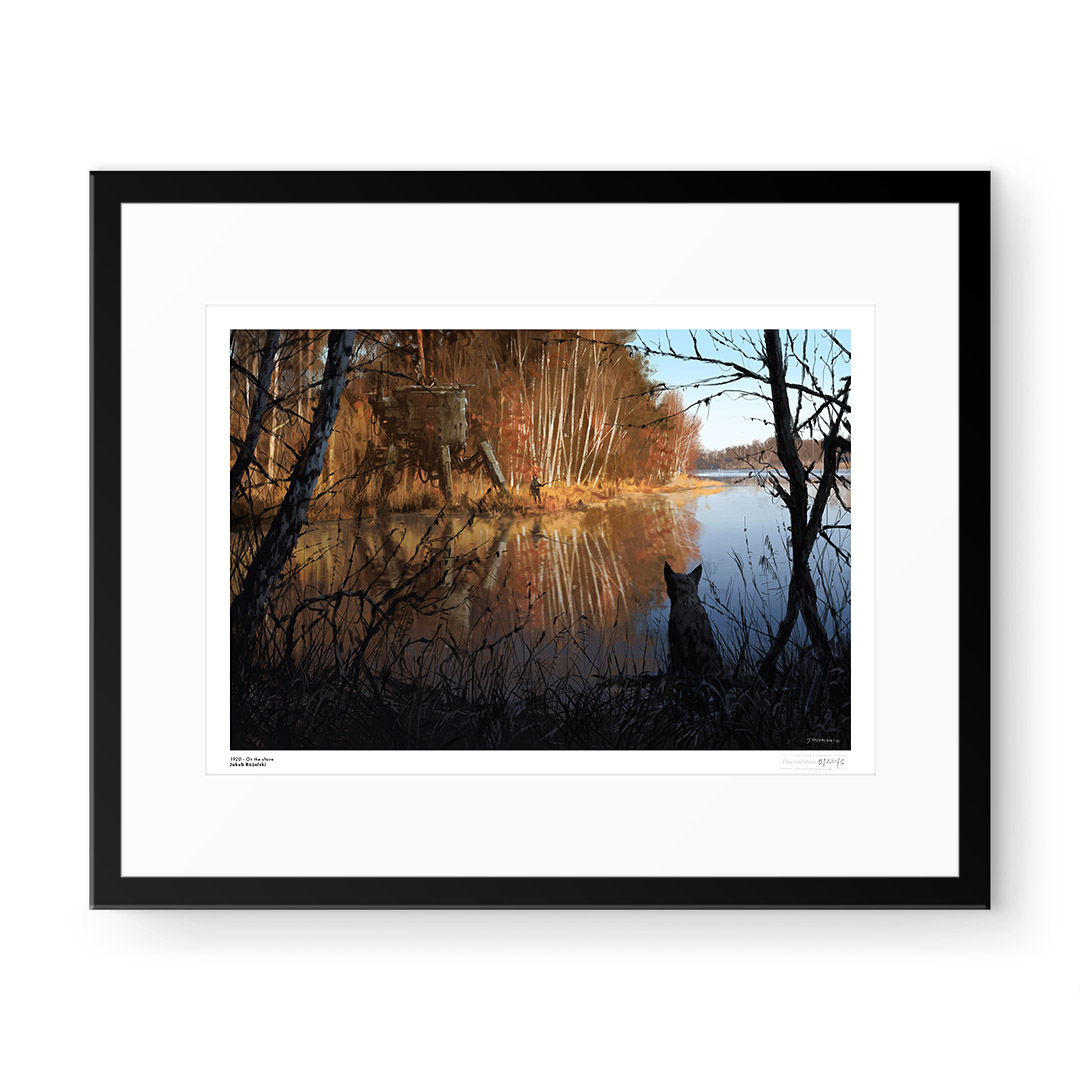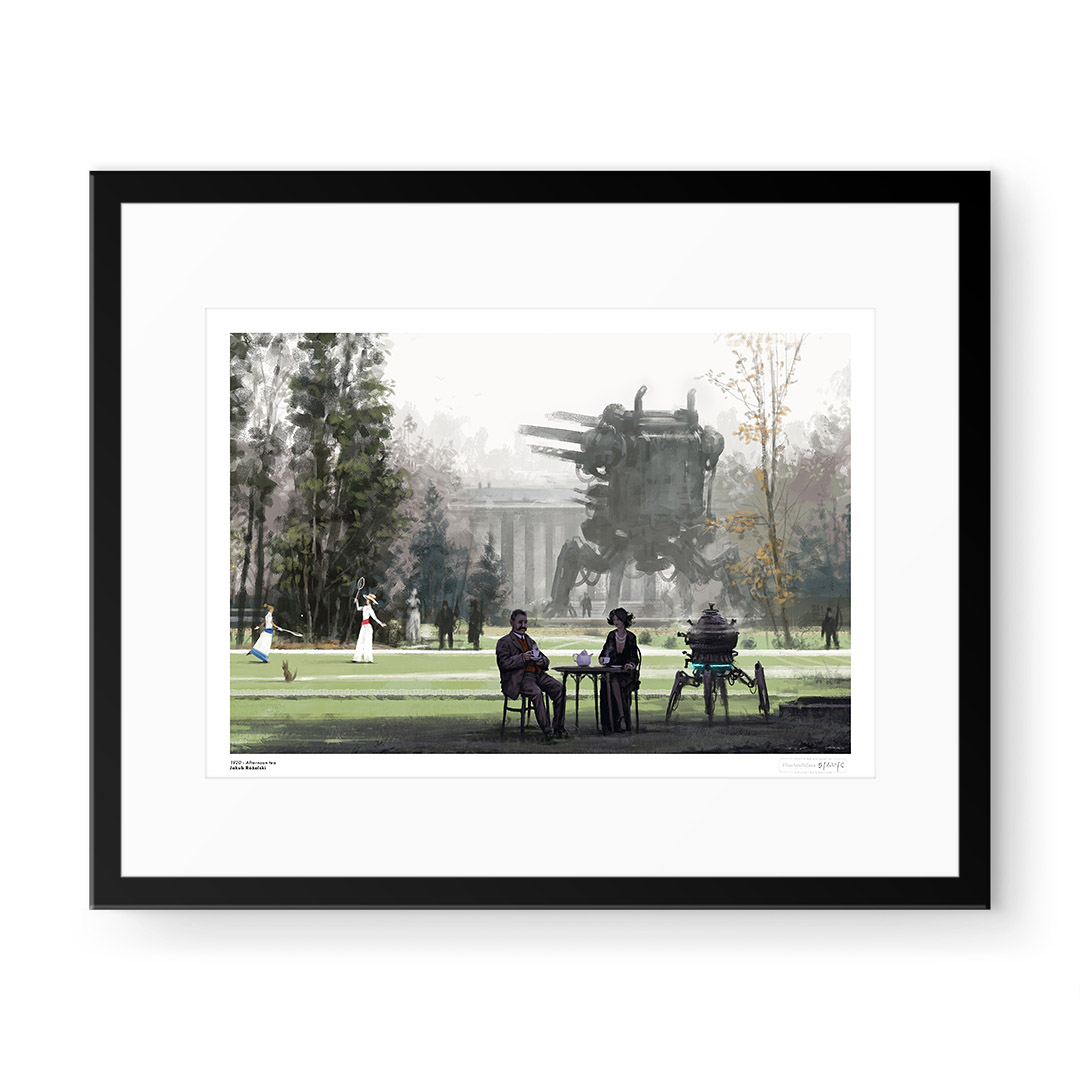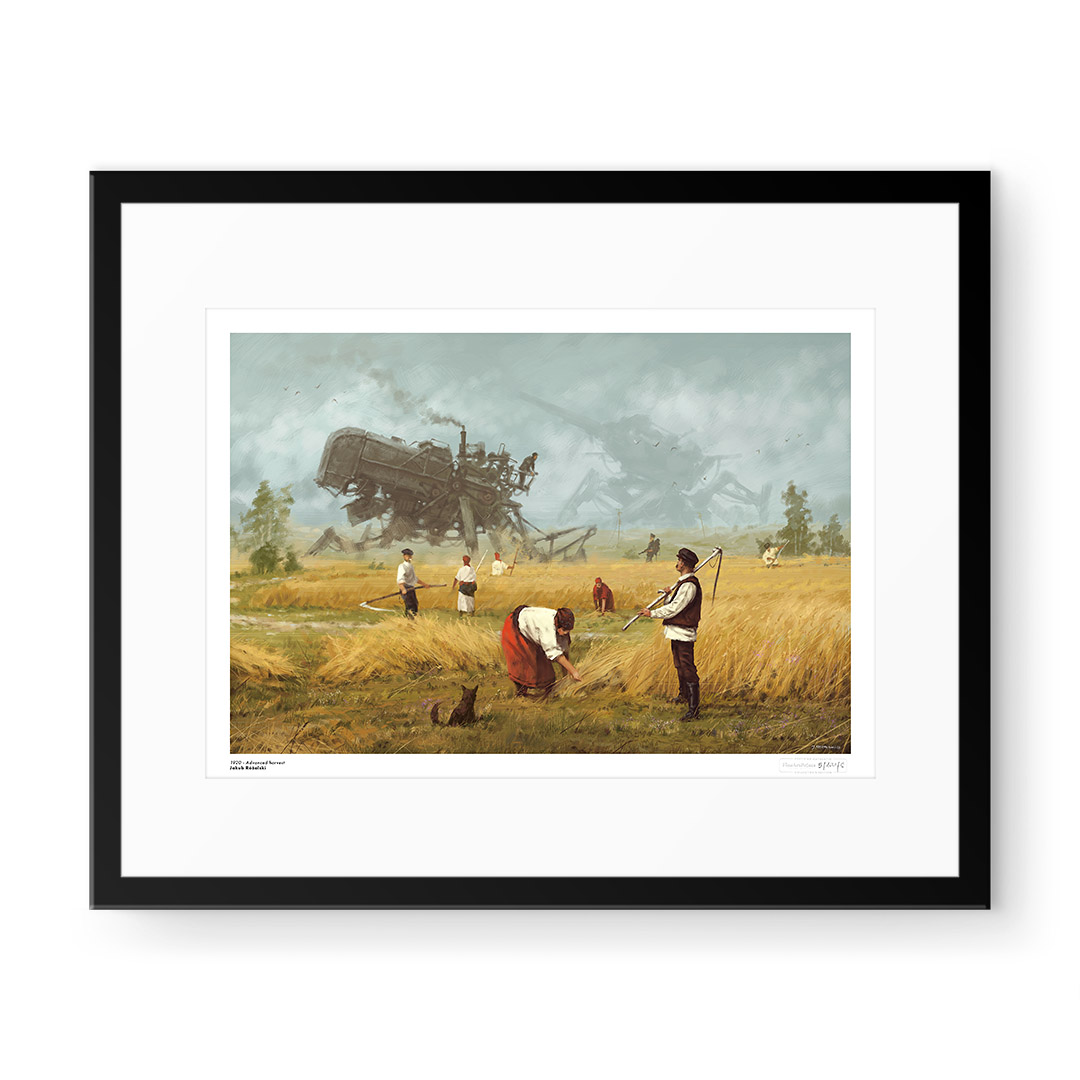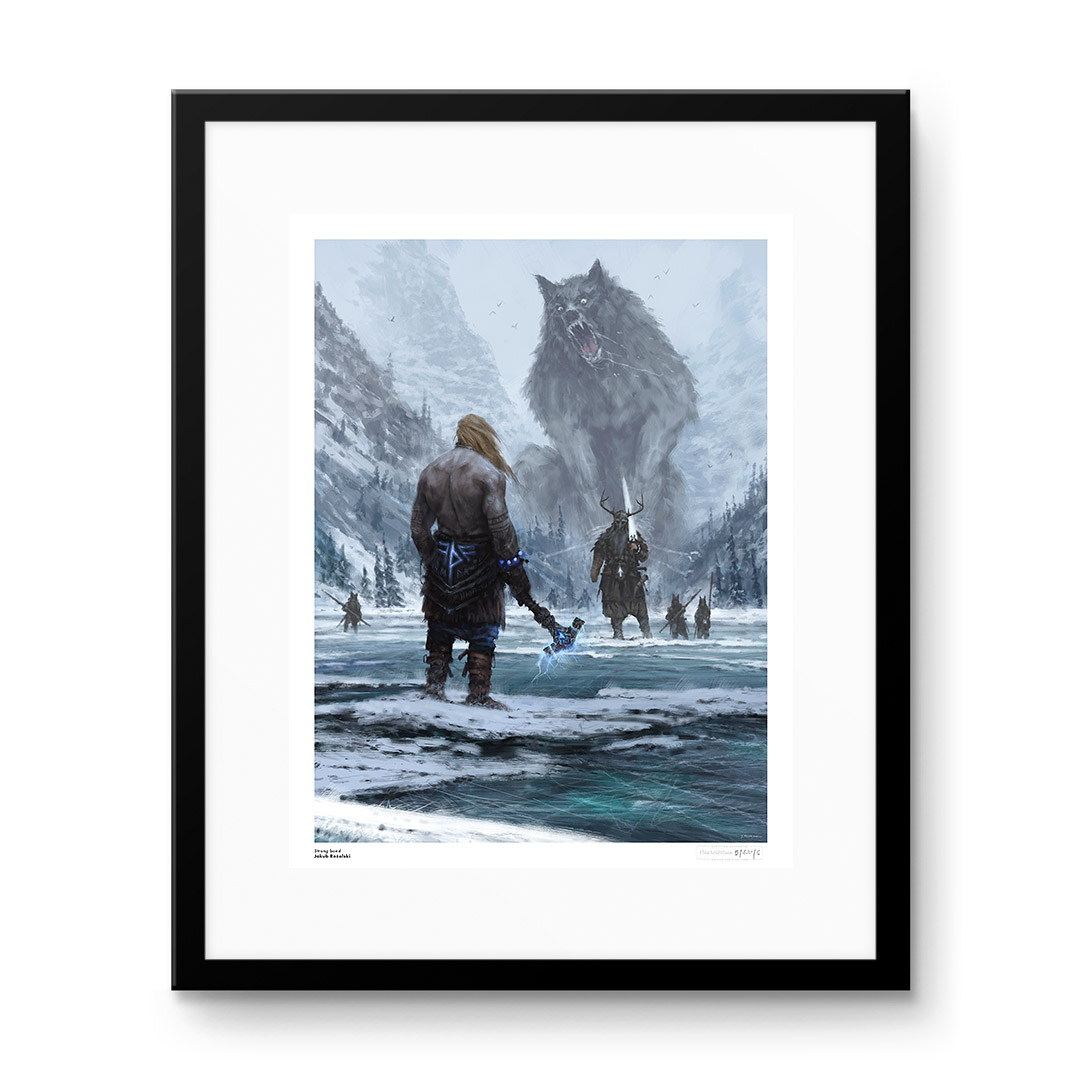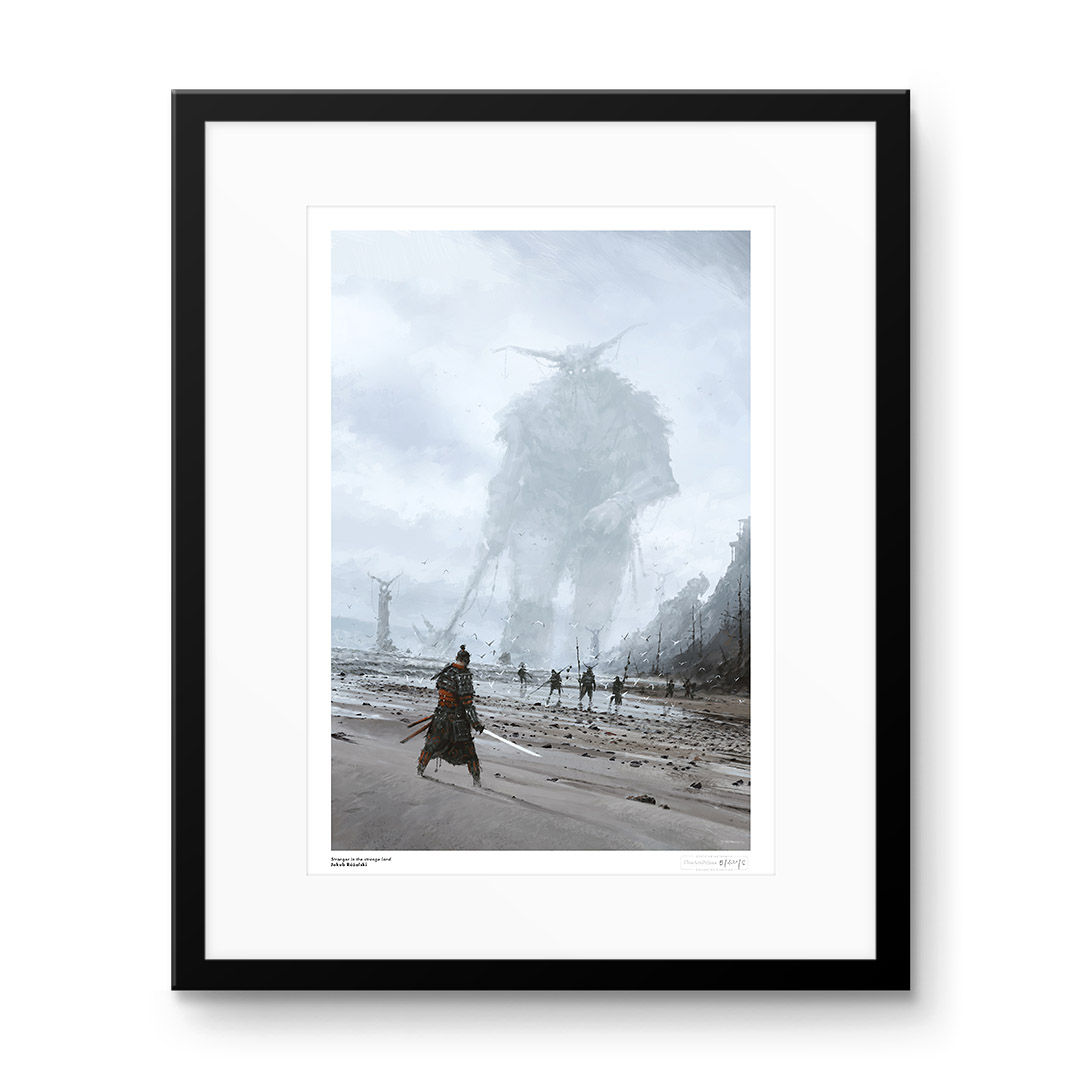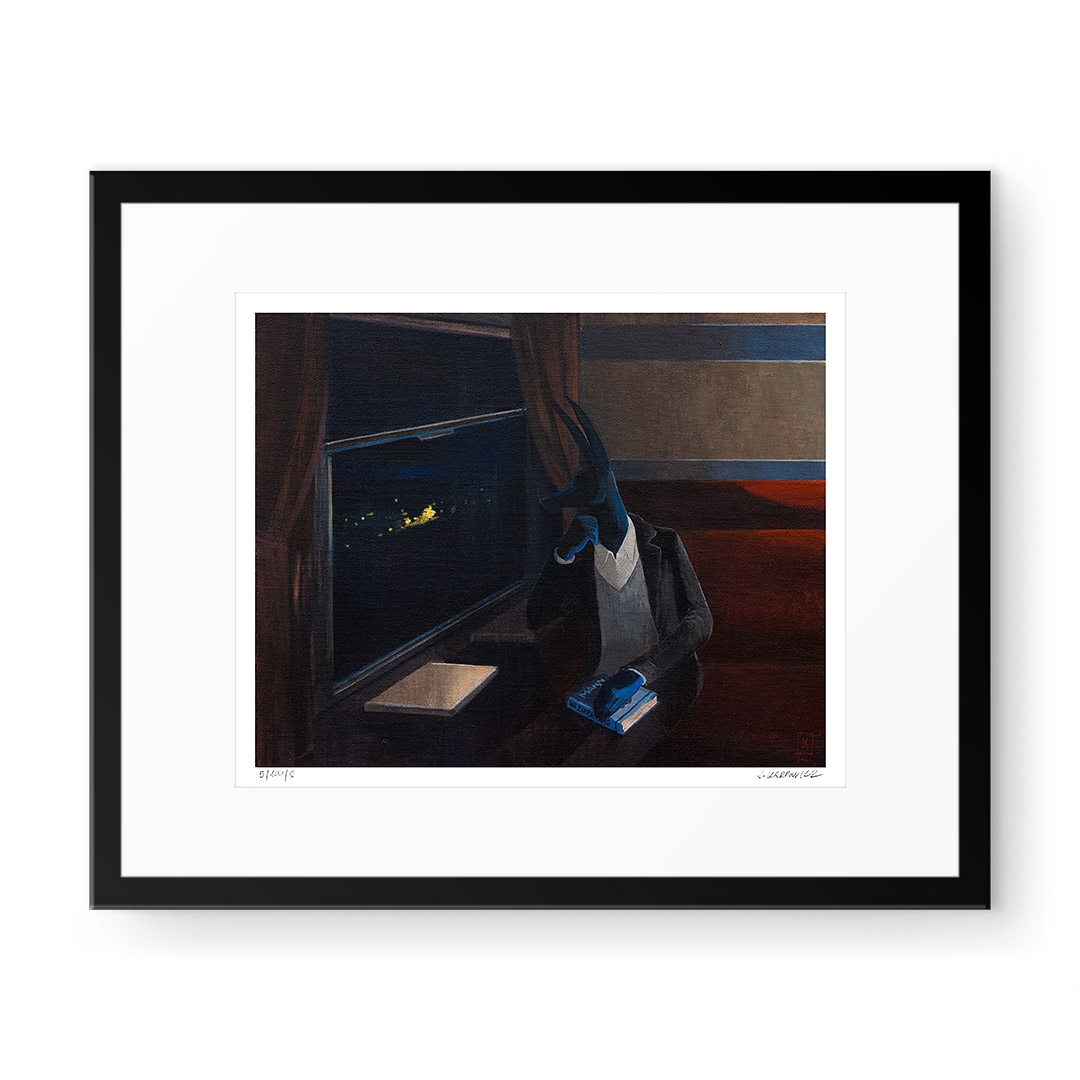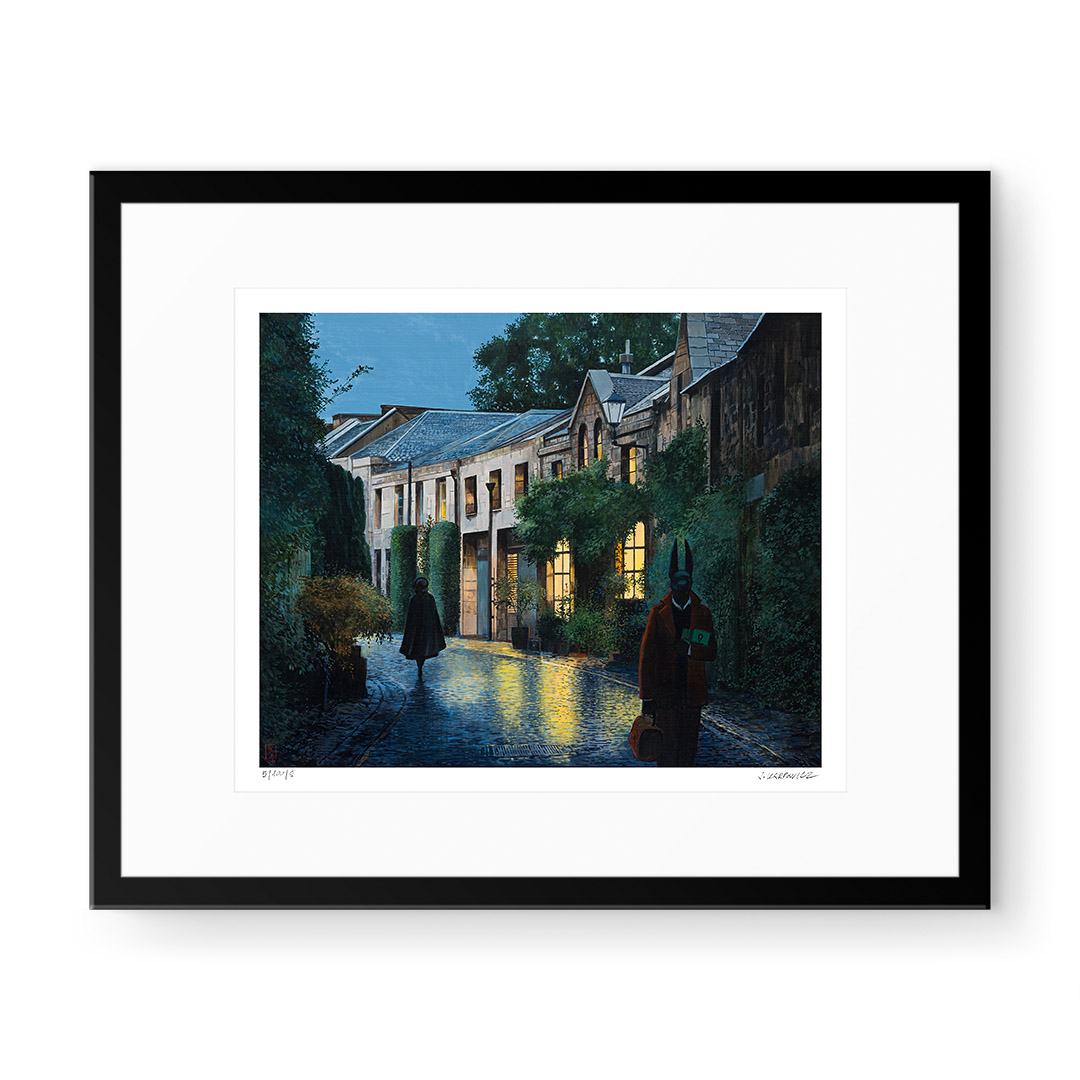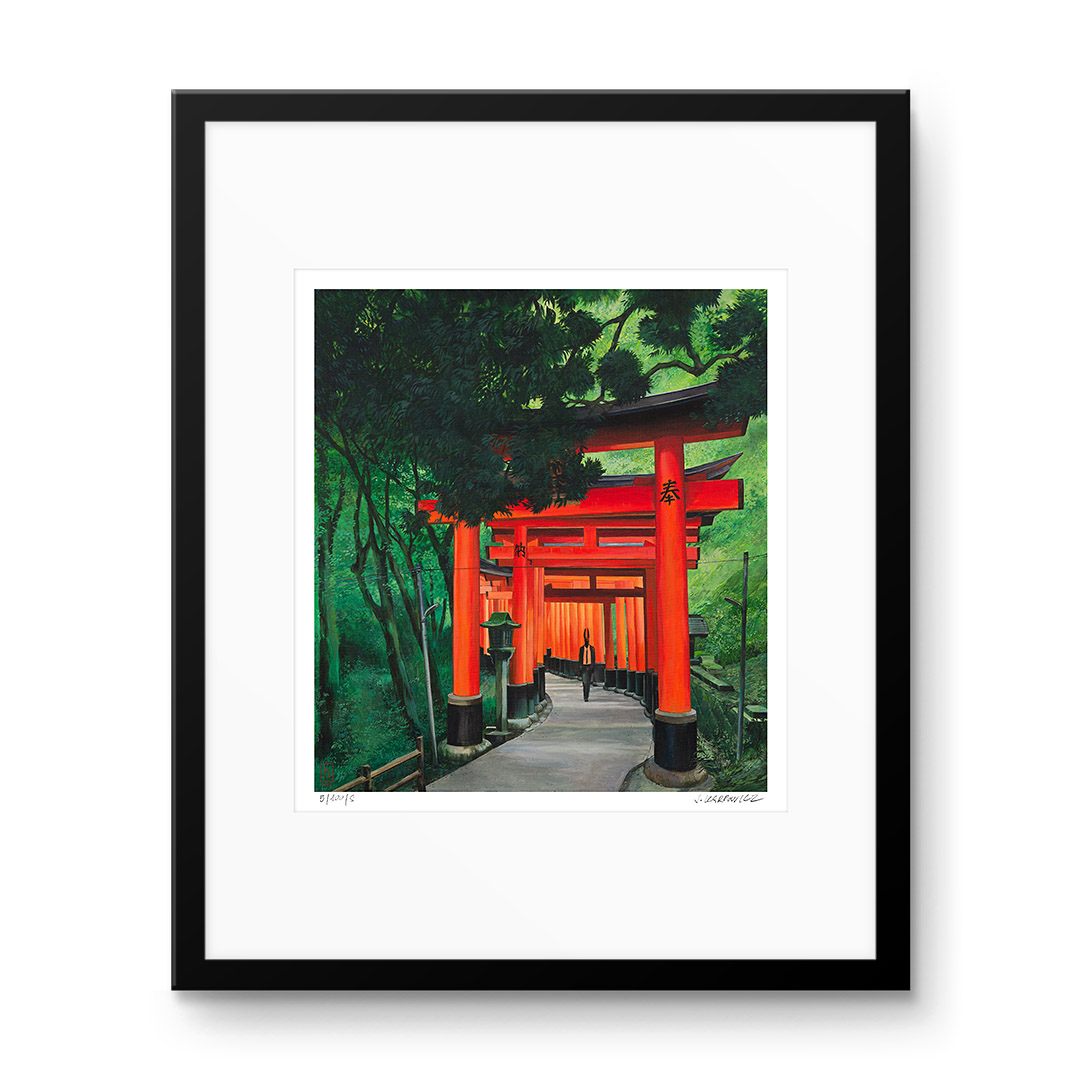COLLECTOR’S PRINTS – DIGITAL PAINTING
JAKUB RÓŻALSKI
Welcome to the world of Jakub Różalski, where history and fantasy intertwine, creating a unique vision of reality. His works are a surprising blend of Polish and Slavic historical motifs with elements of dark fantasy, science fiction, and dieselpunk. Using digital painting alongside traditional tools, Różalski creates painterly stories where technology meets folklore, and figures from the past step into futuristic worlds.
Discover the fascinating universe of collector’s prints, where rural landscapes meet futuristic machines, and the scenery evokes both nostalgic and apocalyptic visions.
PRINTS | ABOUT THE ARTISTART | BIO | EXHIBITIONS | CREATIVE PROCESS | INTERVIEW
-
Jakub Różalski (Mr. Werewolf) – 1920 – Winter patrol
Price range: 101$ through 1 044$ -
Jakub Różalski (Mr. Werewolf) – 1920 – It’s time to back home
Price range: 101$ through 1 044$ -
Jakub Różalski (Mr. Werewolf) – Ymaar – The Ancient Protector
Price range: 101$ through 1 044$ -
Jakub Różalski (Mr. Werewolf) – The Last Mermaid of the Northern Seas
Price range: 101$ through 1 044$ -
Jakub Różalski (Mr. Werewolf) – 1920 – The youngest sister
Price range: 101$ through 1 044$ -
Jakub Różalski (Mr. Werewolf) – 1920 – Storm catcher
Price range: 101$ through 1 044$ -
Jakub Różalski (Mr. Werewolf) – 1920 – Soup is waiting
Price range: 101$ through 1 044$ -
Jakub Różalski (Mr. Werewolf) – 1920 – Guest from the west
Price range: 101$ through 1 044$ -
Jakub Różalski (Mr. Werewolf) – 1920 – Long time no see
Price range: 101$ through 1 044$ -
Jakub Różalski (Mr. Werewolf) – 1920 – Fields of Usonia
Price range: 101$ through 1 044$ -
Jakub Różalski (Mr. Werewolf) – You found me, my old friend
Price range: 101$ through 1 044$ -
Jakub Różalski (Mr. Werewolf) – At the edge of the world
Price range: 101$ through 1 044$ -
Jakub Różalski (Mr. Werewolf) – Illegal attempt to cross the border
Price range: 101$ through 1 044$ -
Jakub Różalski (Mr. Werewolf) – Grey Reaper (Lanius excubitor)
Price range: 101$ through 1 044$ -
Jakub Różalski (Mr. Werewolf) – Go ahead, take it. It will be our secret
Price range: 101$ through 1 044$ -
Jakub Różalski (Mr. Werewolf) – Does it mean there will be no gifts this year
Price range: 101$ through 1 044$ -
Jakub Różalski (Mr. Werewolf) – 1920 – Take your dog for a walk
Price range: 101$ through 1 044$ -
Jakub Różalski (Mr. Werewolf) – 1920 – Afternoon tea
Price range: 101$ through 1 044$ -
Jakub Różalski (Mr. Werewolf) – 1920 – Advanced harvest
Price range: 101$ through 1 044$ -
Jakub Różalski (Mr. Werewolf) – Stranger in the strange land
Price range: 101$ through 1 044$

ARTIST INFORMATION
Jakub Różalski, born in 1981, is known for creating works that balance on the edge of history and fantasy. He draws inspiration from folklore and his fascination with alternative history. His paintings combine realistic landscapes with elements of science fiction and dark fantasy, giving familiar scenes an entirely new dimension. Projects like “1920+” reflect his interest in history, folklore, war machines, and technology, with a strong emphasis on atmosphere, melancholy, and mystery. Różalski has gained international recognition as a creator of unique worlds that captivate fans of board games, video games, and art collectors alike. His artistic portfolio includes numerous illustrations, graphic designs, and works showcased at art exhibitions worldwide.
BIO
Jakub Różalski (Mr. Werewolf) is an independent visual artist, illustrator, and storyteller, born in 1981 in Koszalin. He is best known for creating the alternative world of 1920+ (featured in Scythe, Iron Harvest, and Expeditions) and for his dark, evocative paintings full of melancholy and mystery, sparking the imagination. He has contributed to Hollywood blockbusters like Kong: Skull Island, and his works have inspired both the gaming and film industries (Neill Blomkamp — Gdańsk), as well as writers (the anthology Other Worlds). In 2018, he was awarded the Minister of Culture and National Heritage Award.
Różalski focuses almost exclusively on his own original projects and those based on worlds he has created. In his work, he blends classic motifs and painterly techniques with modern elements, distinctive style, and original stories and ideas. His paintings often combine realistic landscapes, rural life, and wild nature with fantastical and sci-fi elements, giving familiar scenes an entirely new dimension. His greatest inspirations are history, film, late 19th and early 20th-century painting, folk tales, everyday life, wild nature, and his beloved wife, Alsu. “What has always interested me most is creating and telling stories through my art—creating portals to other, fantastical worlds, both for the viewer and for myself.”
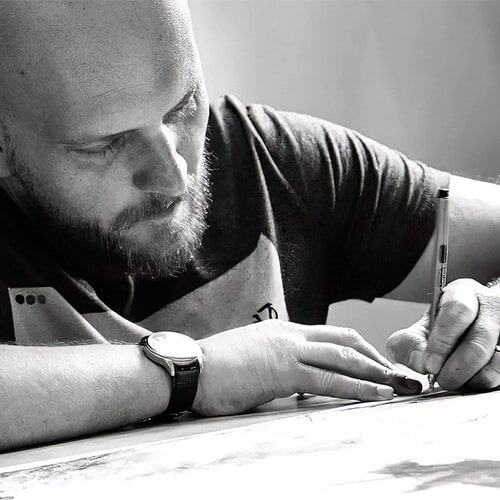
EXHIBITIONS AND EVENTS:
2024
Multimedia Exhibition: ‘The World of 1920+’ at the Kashubian Philharmonic in Wejherowo
Exhibition of Polish Illustration: From Szancer to Digital Art. A review “from classics to contemporary creators” at the Bezalel Academy of Art and Design in Jerusalem
2021
Exibition: ‘The World of 1920+’ at the Trieste Science+Fiction Festival in Teatro Miela, Trieste
Pre-auction Exhibition: Magical Art, Surrealism, and Magical Realism — Desa Unicum, Warszawa
2018
Exhibition and permanent display: ‘Other Worlds’ at Ochorowiczówka — Museum of Magical Realism in Wisła
2016
Main exhibition: at OPT Zamek during Dni Fantastyki in Wrocław
2015
Exhibition: Pragaleria, Warsaw – ‘The World of 1920+’
AWARDS:
2020
Silver Bohateron Award in the Public Figure category
2018
Minister of Culture and National Heritage Award in the Digital Culture category
ARTIST IN THE MEDIA:
GOG.COM
Games have always accompanied me – an interview with artist Jakub Różalski
ARTSTATION MAGAZINE
Howling at the Moon: Jakub Rozalski’s Inspirations
INTERIA
Here, the winged hussars battle against combat robots. Jakub Różalski talks about the 1920+ project and “Iron Harvest.”
JUEGOS CON ARTE
Jakub Różalski | Entrevistas con Arte
USEFUL LINKS:
Jakub Różalski in action
See how Jakub Różalski creates his artwork, from the first sketch to the final detail. Follow every stage of the creative process and discover the magic of digital painting in the hands of a master.
INTERVIEW WITH JAKUB RÓŻALSKI
Hello, Jakub! I’m really glad we can have this conversation. Your works, especially those from the “1920+” series, have an incredible atmosphere. I’m curious about what inspires you to create these unique worlds and how you’ve developed your artistic path. To start, could you tell us where you draw your inspirations from?
Hi, it’s great to be here as well. Inspiration is a broad topic. Practically anything can be inspiring—whether it’s an autumn hike in the mountains, observing the winter landscape outside the window, or playing with a cat. But for me, the greatest inspiration has always been film and history. As a child, I was often sick and couldn’t be very active, so I stayed at home, escaping into the world of books and movies.
Many people see 19th-century painting as an inspiration in my works, but I fully discovered Chełmoński and Józef Brandt much later, in high school or even during my university years. My work is much more influenced by Czterej Pancerni i Pies (Four Tank-Men and a Dog), Akademia Pana Kleksa, Janosik, Aleksander Ford’s Krzyżacy (The Teutonic Knights), or Jerzy Hoffman’s Potop (The Deluge)—not to mention the films of Ridley Scott and David Lean, early computer games, model building, summers spent in the mountains, as well as the literature of Sienkiewicz and Tolkien. These were the things that fascinated me as a child and teenager. Film and VHS tapes stimulated my imagination and shaped me artistically much more than painting or other visual arts.
I’ve also always been inspired by animals, wild nature, ancient beliefs, and the simple life and work in the countryside. I try to combine all of this in my own unique way, creating fantastic worlds and stories.
That’s very interesting. You mentioned that your main source of inspiration has been film and history, but in your works, we also see elements of science fiction and mythology. Do you combine these motifs? How do you give your works a modern, fantastical character?
I try not to combine these motifs. That is, if there are elements we could call sci-fi, I don’t mix them with mythology. In the world of 1920+, we have dieselpunk and giant walking machines, but there are no werewolves, giants, or magic. These are entirely different worlds. I don’t really connect with the present—our times are completely uninspiring to me and visually just unattractive, garish. History, especially ancient times, the Middle Ages, and the early 20th century, has always fascinated me and has been my main source of inspiration. Just compare how cities or rural areas looked in the early 20th century. Without romanticizing it, the landscape and composition were subdued, harmonious, with natural colors and materials dominating—from clothing to buildings to tools and machines. There was much more wild nature and animals, both in the natural environment and accompanying people in daily life. I fully understand the 19th-century masters who found this inspiring and fascinating. Today, it’s hard for me to imagine someone standing in a field painting modern tractors, combine harvesters, or other farming machines…
Are there any specific motifs or elements in your works that regularly reappear?
Yes, certainly. I primarily paint for myself, so what interests, inspires, and fascinates me often appears in my works. The motif that reappears most frequently is my wife as a model, haha. I love winter, silence, peace, open spaces, muted colors, wild nature, and animals. I often paint rural landscapes and the Polish mountains. I also have a fondness for werewolves, witches, dark myths, and folk tales.
Combining traditional painting with digital technologies is quite an unusual mix. Could you tell us more about your creative process? What techniques and tools do you use in your work?
I currently work and paint primarily in digital formats. However, I strive to ensure that my style in digital painting doesn’t differ much from traditional works. Many people don’t notice the difference, so I think I’ve managed to achieve that, and I’m very pleased with the result. The process of working with digital painting is practically the same as with traditional painting. What makes the biggest difference for me is the ability to save my work and the ease of experimentation. It allows for more bold planning and the freedom to change the composition or individual elements of the piece, providing greater room for improvisation. In traditional painting, you have to be much more disciplined and stick to the plan. Any changes to the composition or repainting elements are much more time-consuming and stressful. As I get older, I value my free time with loved ones more, and working with a tablet helps save that time. Nearly all of my projects are tied to the gaming and film industries, which also influences my choice of tools and techniques.
Tablets are an important tool for many artists today, but what are the biggest challenges you encounter while creating your works? How do you deal with them?
The biggest challenge is always trying to maintain a recognizable and distinctive style while introducing freshness and visual originality. Often, I want to paint something completely different—from a new perspective, with a different approach or composition. However, during the process, this “new” approach often stops appealing to me, and I feel like it’s somehow forced. This internal struggle is probably my biggest challenge right now.
Of course, another issue is the lack of time to complete all the projects and ideas. As I get older, it seems like I have less time and energy, while at the same time, more and more interesting ideas come to mind. I want to spend more time with my wife, travel, rather than spend long hours in my “cave” creating, but on the other hand, I can’t live without painting. When I have an exciting idea in my head, it’s hard for me to focus on anything else. Finding the right balance between work and personal life is my greatest challenge.
Since you mentioned balance, do you have any particular rituals that accompany you in your creative process?
Music is incredibly important to me. I can’t imagine creating without my favorite tracks and headphones. It allows me to disconnect from everyday life and fully immerse myself in the world I’m creating. It always accompanies me and is an integral part of my creative process.
You are also known for your work in the gaming industry, particularly through the “Scythe” project. How has working on games influenced your artistic style and creative process?
My experience with the gaming industry, both board games and video games, primarily comes from the perspective of a world creator and author, not just an illustrator. Of course, these roles are interconnected, but as a world creator, I have more control over many aspects of the collaboration and the scale of my involvement. However, this hasn’t influenced my style or creative process in any way. I consciously and consistently reject all commissions and collaboration proposals that aren’t connected to projects based on my own worlds and stories. I strive to ensure that my work is associated exclusively with my own original projects. Sometimes I regret such decisions, like when I had the opportunity to work on “The Northman” directed by Robert Eggers. At the time, I was working on “Iron Harvest” or an expansion for “Scythe”—I don’t remember exactly—and had to decline due to lack of time. I’m a huge fan of Eggers, and “The Northman” turned out to be, in my opinion, a masterpiece. To this day, I regret it and can’t forgive myself for not accepting that offer.
You started your journey with art quite early. Do you have any advice for young artists who want to develop their skills and achieve success in digital art?
I don’t like giving advice, especially when it comes to creativity, as it’s a very individual and personal matter. The only thing I can suggest is not to give up and to follow the voice of your heart and passion. This is especially difficult in today’s times. Social media, on one hand, make many things easier, but on the other hand, they lead us to compare ourselves and compete with practically the whole world. Young people today are under immense pressure, and breaking through and staying at the top is incredibly challenging. Everything quickly becomes boring, and people are constantly seeking new stimuli—the market is saturated. Additionally, there’s the issue of artificial intelligence, which has flooded social media. That’s why it’s so important to create something of your own, something personal, and to have something to say or share.
How has your artistic style changed over the years? Are there any specific moments that had a key impact on the development of your art?
The themes remain fairly consistent. I definitely allow myself to move away from excessive realism toward impressionism and less literal interpretations more often now. I try to find a compromise between realism and impressionism, leaving more room for imagination and free interpretation. Although I often use reference materials or photos in my work, I find the greatest satisfaction in pieces painted primarily or entirely from imagination. There wasn’t a single moment that influenced this development—it’s a process that takes years, or perhaps even a lifetime. Who knows, maybe in old age, I’ll completely escape into abstraction!
Your works often tell stories, even without words. I’m currently looking at one of them, Advanced Harvest, and dialogues automatically come to mind. When creating new pieces, do you think about what stories they might tell?
Always! Of course, there are times when some illustrations are purely production-related, tied to a specific game element or its mechanics, but creating and telling stories through my work is the most important thing for me. I practically never start working on a new piece unless I have a story in mind that I want to convey, or a fragment of the world that I want to showcase. I always start my work process by creating the story in my imagination and visualizing it. This part often takes me longer than the actual painting. Sometimes it becomes an obstacle—when I visualize the piece so precisely that I lose the motivation to paint, feeling like everything is already done… of course, only in my head, haha.
We’ve already mentioned motifs, realism, and impressionism, but do you also include specific historical figures in your works that inspire you? What elements of Polish culture or history hold particular significance in your art?
Historical figures do not really appear in my works. I am more inspired by events, conflicts, and cause-and-effect relationships. For example, the war with the Teutonic Order and the Battle of Grunwald, or the Polish-Bolshevik War of 1920, which was a major inspiration for the world of “1920+.” As I mentioned earlier, when it comes to Polish culture, I greatly value classic cinema, of course literature, and undoubtedly also the wonderful Polish painting.
Artificial intelligence is a hot topic lately. How has the development of technology influenced your approach to creation?
It hasn’t influenced me in any way, except that I feel an even greater sadness about the times we live in and the fact that even art is slowly losing its human, empirical aspect. My work process has remained unchanged for years. I don’t chase after technological innovations that could make my work easier. The development of graphics, digital painting, and tablets has been sufficient for me in terms of needs and expectations regarding my workshop and combining my passion for film and games with my work. I always start with a blank sheet of paper or canvas, using a few brushes, both digitally and traditionally. Of course, digital painting makes many things easier, but it is still painting. The stroke of a digital brush isn’t significantly different from a traditional one—both require skill, discipline, and experience. It’s also worth noting that many traditional painters today use various technologies, such as projectors or laptops. I believe that years of working with digital painting greatly help with traditional painting and vice versa.
At the end of our conversation, I have one last question. Are there contemporary artists whose work you admire and who have influenced you? What aspects of their creativity inspire you the most?
Not really. I try not to draw inspiration from contemporary creators. As I mentioned, my inspiration mainly comes from my youth and what shaped me back then—a nostalgia for the world and times that have already passed. The contemporary world does not inspire me. Of course, there are many contemporary artists and creators whom I greatly respect and admire, but they do not influence my work. If anything inspires me today, it’s more likely the world of film.
Jakub, thank you for this conversation. Your stories and approach to creation will surely inspire many of our readers. The way you combine passion, history, and imagination offers a lot to reflect on, not just for young artists but for anyone seeking their unique way of creating. Thanks once again!
Interview with Jakub Różalski by Marcin Homan
DISCOVER MORE PRINTS
Check out works by various artists that will perfectly complement your collection:

